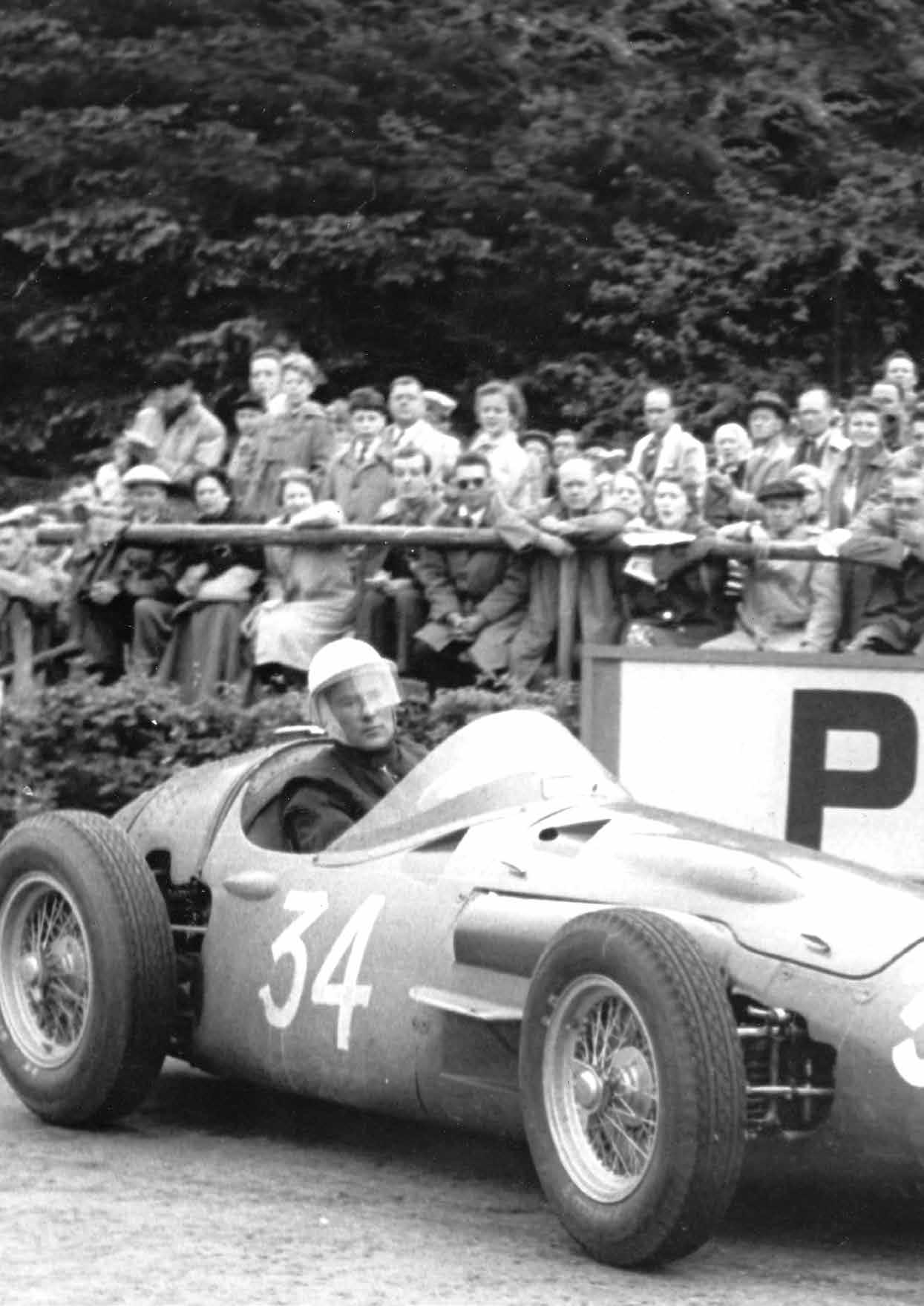Sir Stirling Moss
A tribute to a legend and former Brooklands Members’ President

JULY-AUGUST 2020
brooklands bulletin
Brake components
Clutch & Gearbox
Cooling & Fuelling
Electrical

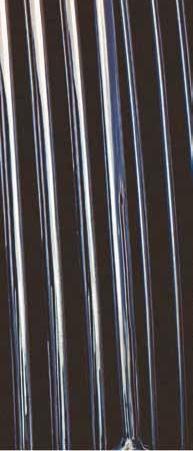

Engine & Mechanical
Steering & Suspension
Moss began supplying sports car parts in 1948, now benefitting from decades of experience, we are one of the world’s oldest and largest sports car parts and accessories specialists.
Today, our mission is to keep the great marques alive and well by supplying parts and accessories of the highest standard. We offer friendly, professional and knowledgeable service and hold a vast number of parts in stock, available from our branches or online backed by fast, reliable delivery worldwide.
Specialising in Austin-Healey, Classic Mini, Jaguar, Mazda MX-5, MG, Morris and Triumph.




moss-europe.co.uK
MX-5 JAGUAR London +44 (0)20 8867 2020 Bradford +44 (0)1274 539 999 Bristol +44 (0)117 923 2523 Manchester +44 (0)161 480 6402 Paris +33 (0)1 30 80 20 30
SPECIALISING IN CLASSIC MINI,
PARTS ACCESSORIES TOOLS
JAGUAR, MAZDA MX-5, MG, MORRIS, TRIUMPH AND
UNIVERSAL COMPONENTS.
Reading Philip Strickland’s tribute to Sir Stirling Moss reminded me of what an incredible character this great racing driver was. As well as his effortless driving style, he was equally smooth in his approach to people and that is what made him a hero to so many during an era that was not short of superb talent.

Stirling’s affable nature was ably demonstrated to me when, as a very green young reporter, I was charged with getting some quotes for a magazine feature. Having heard that Stirling’s phone number was listed in the directory, I dared to dial it. When Stirling himself answered cheerily, I was amazed and then astonished when he spent the next few minutes chatting and giving me way more material than I needed for the story.
By the end of the conversation, I felt I was one of Sir Stirling’s friends and this was, perhaps, his greatest talent from a considerable armoury. He was genuinely interested in my questions and gave detailed, thoughtful answers. He was also funny and told a couple of stories that could never make it to print.

It’s little wonder that Sir Stirling Moss felt such an affinity with Brooklands and enjoyed his time as the Members’ President. His approach to racing, people and life exemplified the very best of sportsmanship and everyone who met him responded in kind. The world is a poorer place now he’s gone, yet we should all be very proud of the time he spent with us.
Alisdair Suttie Editor
Brooklands Bulletin
Front Cover photos: Influence Associates
Become a Member
Brooklands Members is the official support organisation for Brooklands Museum and is dedicated to raising funds for the preservation of the historic Brooklands site.


Members receive the Bulletin six times per year and enjoy free admission to the Museum, except when major events are taking place, in which case additional charges may apply. Club Level Members have access to the Clubhouse Bar on Thursday, Friday and Sunday lunchtimes.
For full details of membership benefits, contact the Members Administrator, Tim Morris: 01932 857381 ext 226; or www. brooklandsmembers.co.uk where you can find the latest news on Brooklands.
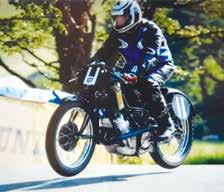
JULY - AUGUST 2020 | BROOKLANDS BULLETIN 3 brooklands bulletin contents REGULARS News 4 Museum Updates 9 Forthcoming Events 13 Letters 17 Members’ Matters .............. 43 Reviews 47 Around the Collection 50 FEATURES Stirling Moss 20 Taking on the TT 27 Brooklands and the Battle of Britain 30 The Darling of Brooklands Part 2 36 20 27 36 43 30
Welcome
Museum from Home
Brooklands is working tirelessly to make sure you can still enjoy the exhibits with the Museum from Home on our website. The Museum from Home web page is the place to catch up on the videos, activities and stories we’ve been sharing over the last few months. Recent updates include a challenging Brooklands Quiz, 360 photos of the inside of the Wellington Bomber, and online Brooklands-themed jigsaws.
There are also colouring sheets by Volunteer Paula Ware, find your Brooklands’ Driver Name, fascinating stories from our Volunteers on their time at Brooklands, and our 10-part Collection
Membership during lockdown
Close-Up series where we go behind the scenes in the Collection Centre to look at some of the objects we care for.
If you have been looking for craft activities, then head over to the Colouring Sheets and Downloads page where we have uploaded the templates for three-dimensional drawings of the Wellington, Hangar and Brooklands Paddock. We would love to see your work to recreate Brooklands at home, so please send in any photos of your completed projects to: reception@ brooklandsmuseum.com
 Katharine Allen
Katharine Allen
Virtual Motorcycle Day
The Museum greatly appreciates all of the Members who have renewed their membership as normal during lockdown to support Brooklands during this difficult period. Anyone who has been affected by the coronavirus pandemic can extend their membership to cover the period while the Museum is closed due to the lockdown.
This offer applies whether your membership renewal falls during the current closure or after the Museum reopens. You will be contacted by email or post at the normal renewal time.
The Museum wants its Members to continue enjoying all of the benefits of joining Brooklands and everything the Museum has to offer. Even during the current situation, Members enjoy a twice-monthly newsletter, the Bulletin magazine, and access to many online events and activities. For more information on membership extension, call: 01932 857381 ext 226; or email: members@brooklandsmuseum.com
Brooklands is hosting a Virtual Motorcycle Day over 4-5 July and everyone is welcome to join in using the Brooklands Members TV YouTube channel. Member should subscribe to be notified when the event goes live. There will be archive footage and the Virtual Concours.
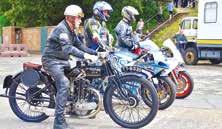

There are two categories for the Virtual Concours, Road and Competition. To enter, please post a side-on image of your bike on Twitter or Instagram using the hashtag #roadbikebrooklands or #competitionbikebrooklands with the number plates covered and including the bike’s year and a brief history. The bikes will be judged on the Museum’s Twitter page @ BrooklandsMuseum on 4-5 July. Keep an eye out for updates with the Twitter hashtag #virtualmcday
Martin Gegg
BROOKLANDS BULLETIN | JULY - AUGUST 2020 4 news
Despite the Museum being closed, we have received donations of all sorts as people staying at home sort through their attics and garages. One recent arrival is a lovely collection of photographs taken by Albert Stenning, who worked in aviation for Hawker, Air Service Training and BOAC but also had a keen interest in motorcycle racing.
Albert’s collection includes some fantastic snapshots of clubman races at Brooklands in the 1930s. They record a personal view of the events that official press photographs rarely capture, alongside some of Albert’s highlights from a long career in aviation.
Katharine Allen
Check out Members’ media
The Brooklands Members’ team have been busy creating extensive coverage for the social media channels. This includes BM.tv videos on Vimeo and YouTube with archive material and new interviews to keep Members entertained and informed. There has been a great deal of hard work to make sure Members enjoy Brooklands’ online events, such as Virtual Vintage (pictured right) and American Car Day.
Events coming up that will be covered on the Members’ social media channels include Motorcycle Day, Supercar Sunday and the Members’ Classic Car Show, details of which are elsewhere in News.

Message from Members’ Chairman
As I type, our Museum is still closed and it appears likely that will still be the case when this edition of the Bulletin falls through your letterbox. For the Museum, this is an extremely challenging time and, in the absence of admission income, your subscriptions have never been more vital. So, I start this message with a huge thank you to everyone who has renewed their membership since the closure, it really is appreciated.
Recognising these unique circumstances, there is an option to pause your membership. Details were in the last edition of the Bulletin and will accompany your renewal invitation. If you are unable to renew in full in the normal way, please consider this alternative. Every renewal counts and remember the sage words of the Dalai Lama: ‘If you think you are too small to make a difference, try sleeping with a mosquito.’
We were due to hold our AGM in July, but clearly this will not be possible and we recognise it may be a considerable time before we can open the Napier Room for large gatherings. In the light of that harsh reality, we have been in discussion with Sir Gerald Acher and the Trustees about alternative arrangements, and it has been decided to postpone the 2020 AGM and combine it with the 2021 AGM. We recognise there is still a requirement for our accounts to be submitted annually, so our 2019 accounts will be prepared later this year and made available to the membership via our website, with a summary published in the Bulletin. Both 2019 and 2020 accounts will be
Motor Sport magazine offer

Brooklands Members can now save money on a subscription to Motor Sport magazine. Members can claim a free digital issue of the world’s longestrunning motor racing publication by downloading it at: www.motorsportmagazine.
com/brooklands
You’ll receive the latest digital issue and this also gives you the opportunity of a threemonth trial of Motor Sport in print and online for £3. The usual subscription price of £5 per issue applies after this period, which is a saving of more than £80 per year, plus you have the added benefit of the magazine being delivered direct to your home, as well as unlimited access online.
Motor Sport has been running since 1924, when it was first printed as the Brooklands Gazette. In that first issue, the magazine reported on record-breaking motorcycle racing at Brooklands. Former Motor Sport Editor Bill Boddy founded the Brooklands Society in 1967 and wrote several books about the circuit and its history.

The magazine continues to cover all forms of motorsport, both modern and classic, with in-depth features and superb photography.
presented at the 2021 AGM and submitted for approval in the normal way.
Regrettably, the position in respect of our 2020 Annual Dinner is uncertain. We had provisionally booked 6 November with our caterers, Creative Events, following discussions with our President, Damon Hill, as his availability is determined by the Formula 1 calendar. However, on the assumption the Museum is open in November, we don’t know whether social distancing restrictions will reduce the numbers permitted in the Napier Room below a viable level, or whether our caterers will be able to provide a full service, and of course the Formula 1 calendar is still provisional. As soon as we have anything more definite, we will let you know, and we are hopeful that by the time the next Bulletin is published the situation should be clearer.
News of the death of past President, Stirling Moss, was announced just as the last edition of the Bulletin was going to press. My predecessor, Philip Strickland, has written an excellent tribute that you can read elsewhere in this edition. There is little I can add, beyond saying it was a great privilege for me to meet and subsequently get to know one of my boyhood heroes. All the warmth and praise that has been published in accounts of his life over the last few weeks was well deserved.
 Neil Bailey
Neil Bailey
JULY - AUGUST 2020 | BROOKLANDS BULLETIN 5 news
donation
Photo archive
Virtual motorsport is real success
The Brooklands Festival of Motorsport on 13-14 June was a huge success and was enjoyed by many Members and the public online. This included the famous Double 12 competitions with videos of previous years’ competitors taking part in the usual varied mix of classic cars. The event celebrated Brooklands’ rich motoring and motorsport history. As usual, it was held on the weekend closest to the anniversary of the original opening of the race track on the 17 June, 1907.
Like so many of our events this year we took the Festival of Motorsport on to Twitter with the hashtag #VirtualDoubleTwelve to share stories, action and activities from previous events. This included footage of last year’s Speed Trials on the Mercedes-Benz World track, Napier-Railton demonstration runs and some clips of competitors tackling the Driving Test with enthusiasm and gusto. Over on our website we released a new activity download, the 3D Brooklands Paddock and a new set of online jigsaw puzzles featuring event artwork. All of the videos are still available on the Museum’s social channels and you can access the #VirtualDoubleTwelve activities at the Museum from Home section of our website.
Katharine Allen
Supercar Sunday
Supercar Sunday is set to go ahead on Sunday 19 July and will be hosted using Brooklands’ social media channels as the Museum remains closed.’ to: Supercar Sunday is set to go ahead online on Sunday 19 July and will be hosted using Brooklands’ social media channels as the Museum remains closed.

Fans of fast cars will be able to chat to each other online and we’re looking forward to seeing lots of photos of your cars to share the passion for supercars of all shapes and ages.
We’ll also have plenty of fun and exciting activities for everyone to take part in throughout the day, as well as videos of previous years’ Supercar Sunday meetings to enjoy the sights and sounds of these great cars.
Check the website for more details and keep up with all the Supercar Sunday action on Facebook, Twitter and Instagram.
Classic Car Show and Retrojumble
The Classic Car Show and Retrojumble is all set to go ahead on 26 July and will take place online rather than at the Museum.
Marathon online effort at Brooklands

Following the postponed London Marathon and inspired by its 26-mile route, the 2.6 Challenge was launched online. Brooklands played its part and the Museum’s company secretary, James Thorne, spotted the satisfying resonance of the numbers 2 and 6 with one of Brooklands’ milestone events, the hosting of the first British Grand Prix in 1926. It was held over a 2.6-mile course taking in most of the Outer Circuit plus the Finishing Straight.
It created the idea of 26 tweets telling the story of that race. Making use of images kindly made available by the Museum, James started tweeting at 9.30am on 26 April, beginning with the origins of the Track, how Britain came to host a Grand Prix and the background to the 1926 event. The race itself started in the 14th tweet, just after 2pm, and the winner’s bouquet was reached in the 26th. That completed the marathon challenge and raised more than £750. You can read the tweets on James’s twitter feed @thornefamily18.
James Thorne
Italian passion goes online
Auto Italia was a big hit with fans of every type of Italian car. Held on Facebook and Twitter on 2 May, Italian Car Day got off
to a great start with a massive thread showing the cars people would have brought to the event. We also put together some footage of the visiting VIP vehicles, including Il Drago Ruggente, Prince Bira’s OSCAMaserati, Max Wakefield’s rebuilt Lola T332 and a rare Ferrari 212 F1. There was also a compilation video of Test Hill action from the last few years and both the videos are still available on all our social channels and YouTube.
Katharine Allen
While we cannot gather the usual variety of classics and people in the metal and person, everyone will be able to chat and swap stories online using the Museum’s social channels. We’ll have videos from previous years and interviews with owners, as well as action from Test Hill.
This is a great chance to catch up with old friends and see some new machinery by sharing photos and anecdotes. Check the website for more details.
Swinging Vintage
We couldn’t dance in person on 16 May, but Virtual Vintage day went with a swing across the Members’ social media channels. Noelle Vaughn sang ‘We’ll Meet Again’ and the Kalamazoo Dance Band helped us put together an excellent playlist. We also organised a Ladies’ Vintage Hair tutorial with Hair That Turns Heads. And we didn’t forget about the guys with a Men’s Vintage Hair guide from Debonnhaire. There was also a shopping discount with Weekend Doll and Cock A Doodle Vintage.
All the videos are still available on our Facebook, Twitter and Instagram channels and the craft activity of the 3D Wellington model can be found in the Museum from Home section of the website.
Katharine Allen
BROOKLANDS BULLETIN | JULY - AUGUST 2020 6 news

Unit 6, Studley Court, Guildford Road, Chobham, Surrey GU24 8EB
Unit 6, Studley Court, Guildford Road, Chobham, Surrey GU24 8EB
Tel: 01483 722 923 • web: www.dclass.co.uk
Tel: 01483 722 923 • web: www.dclass.co.uk
email: dclassautomotive@hotmail.co.uk
email: info@dclass.co.uk

D:class automotive @dclassauto @dclassauto
Full classic interior restorations
d:class automotive specialise in full interior management and restoration of all classic cars. Our knowledge is second to none in supplying period correct carpets, leather or vinyl.
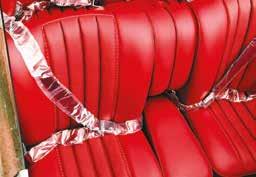
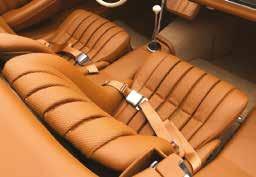



We are very well known and respected in our field of expertise for such marques as Mercedes Benz, BMW, Ferrari, Rolls Royce and Porsche.
All our work is carried out in-house by trained trimmers with vast years of experience and all works come complete with our full workmanship guarantee. d:class have carried out work for customers worldwide and we are happy to work with any possible logistics required for shipping of parts or cars and this is a true testament to the craftmanship and attention to detail that we put into our work. Our quality of work speaks for itself.
Interior repairs
We can repair single damaged areas only without having to go to the expense of replacing a whole cover. The common problem of worn bolsters can be solved within a couple of hours work, replacing the worn cloth, velour, tex or leather panel. Another common fault is split stitching, often seen on the newer model of cars. This again can be repaired as a whilst you wait service. We specialise in warranty work for many manufacturers for the likes of McLaren, Lamborghini, Jaguar, BMW, Mercedes and Ferrari to name a few.
Cloth to leather and full custom interiors
d:class can offer for all makes of car a full upgrade from cloth to leather. This will be done to OEM spec ensuring that it is finished using original patterns, perforations styles and colours. We use only high graded leather with exact grains to match factory finishes and all work is carried out in house. We do not use off the shelf kits and all our work carries a 3-year guarantee.
Alternatively, if you prefer you can overhaul your interior with a completely new and unique finish. Using the brightest leathers on the market or designing your own custom bespoke design on our state-ofthe-art CNC stitch, embroidery and perforation machine. If you can think it, we can create it.
Many unique and award-winning interiors have been produced and restored by d:class and once they have rolled out of our workshops they can be seen nationally and internationally across, not only our own social media but many social media influencers and renown publications.
Hood fitting and rear screen repairs
A full hood fitting service is available in house for a wide range of vehicle manufacturers, we specialise in classic Mercedes hoods. All our hoods come with a 1-year guarantee and are available in a wide range of colours to suit. We can supply and fit OEM where available or aftermarket hoods.
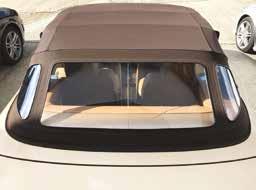
d:class
Many convertible owners experience the common issue of the deterioration, discolouration and eventual cracking of the perspex rear screens, within the workshop we can carry out a replacement service of this issue to most vehicles with the exact thickness perspex required.
We are located in Surrey, 15 minutes from junction 10 or 11 of the M25 and from the A3. Collection can be arranged of your vehicle depending on distance.
Director’s Message

Brooklands Museum has such a large a community of people who care about it, the Collections and this unique site, and that has been so much in evidence during our closure.
We have been so grateful to you, the Members, for your support. Every renewal that arrives is greatly appreciated and when it is accompanied by a donation, or a donation arrives on its own, it means even more. We have been overwhelmed by your generosity and kind words of support.
We know many of you are facing uncertainty and financial challenges, and equally we value every Member who decides to take up the offer of a free extension to their membership so they can use it when we reopen. We would much rather you accept the extension than leave Membership, because it means we will get the chance to welcome you back when the Museum reopens. Please do consider this option when your renewal comes up.
Although we do not yet know our reopening date as I write this, our preparations are well underway so that we are ready when the time comes. We are putting lots of measures in place to make sure that everyone will be able to have a safe, socially distanced visit while still enjoying the many fascinating exhibits Brooklands Museum has to offer.
The long period of closure, followed by what we anticipate will be a period of lower visitor numbers than normal, is giving Brooklands Museum some significant financial challenges. However, despite this we are completely committed to continuing to provide an excellent experience for Members and visitors.


Brooklands is still a unique, inspiring and memorable place, and we are sure that it will attract many returning and new visitors when we can reopen. Please help us spread the word when we reopen and encourage your friends to discover Brooklands for themselves.
In the meantime, we really hope you enjoy this edition of the Bulletin and are keeping in touch with us through our Museum and Members social media channels, the activities and videos on our website, and our regular e-newsletter.
Thank you again to each of you who has shown Brooklands Museum your support during this difficult time and we look forward to welcoming you back soon.
Tamalie Newbery
Estates

These images are from Lee Harvey, the Brooklands Museum Property Manager who has remained on-site during the lockdown.
Lee said: ‘I wanted the Members and Volunteers to see what I see here at the Museum while it’s shut. It is eerie at times as the Brooklands spirit is about the people to me. However, spring time is also here and the weather has been incredible while we carry on with some tidying jobs, some that I’ve wanted to get on top of for more than three years!
‘It’s an odd feeling, hopeful spring, getting on with things, and yet it’s too quiet. I often find myself turning to a Volunteer or colleague to share a moment, only to remember that they’re not there just now.’
JULY - AUGUST 2020 | BROOKLANDS BULLETIN 9 updates
Time stood still: a collection of clocks from the Vickers buildings in the Aircraft Factory. The clocks have largely been collected by Julian Temple.









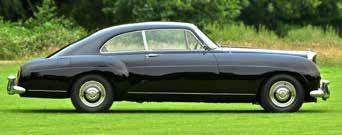
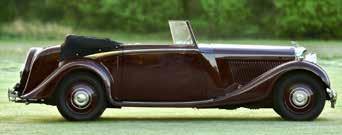

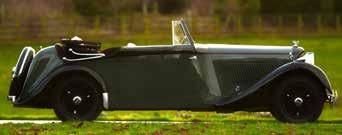

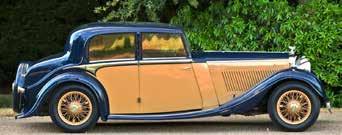 1935 Bentley 4¼-Litre Top Hat Saloon by Freestone and Webb £100,000.00
1952 Bentley Mk VI Standard Steel £44,000.00
1935 Bentley 4¼-Litre Top Hat Saloon by Freestone and Webb £100,000.00
1952 Bentley Mk VI Standard Steel £44,000.00
WE WANT YOUR BENTLEY
1957 Bentley S1 Continental H.J. Mulliner Fastback £450,000.00
1938 Derby Bentley 4.25 MR Overdrive Series Hooper Dhc £280,00.00
1953 Bentley 6.5 Litre Supercharged Petersen Racer £630,000.00
1939 Derby Bentley Overdrive MX Series Drophead Coupe by Vanden Plas. £340,000.00
1940 Derby Bentley MX Series Vanden Plas Overdrive Pillarless Saloon £115,000.00
14 Bentleys sold so far this year. 29 sold last year! 2 Ryehill Ct, Lodge Farm Industrial Estate, Northampton NN5 7UA
1936 Bentley 4¼-Litre Sports Saloon by Freestone & Webb £90,000.00




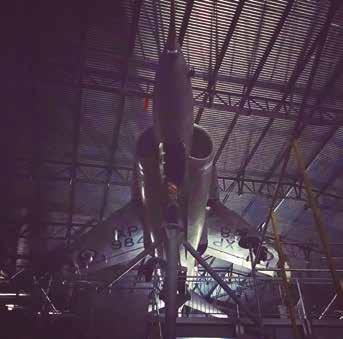
JULY - AUGUST 2020 | BROOKLANDS BULLETIN 11 updates museum
Eerie ivy-covered entrance that shows there are some rather nice brickwork details under various changes created either by man or nature.
It’s not all darkness. Lee sent this picture to a few of the Gardening Volunteer team that have turned some of the spaces around. The electric colour of the red plant by the Shell drum is stunning.
Just for a moment the world seems very peaceful as Lee’s faithful old Land Rover sits on the concrete of the Brooklands Banking.
Sleeping giants: the Barnato Hassan Bentley Special stored away in the dark. The car’s return to its owner has been delayed by the Museum’s closure.
Hawker P1127 prototype in silhouette. However, the unusual quiet has allowed the Estates team the opportunity to complete much-needed tidying jobs.

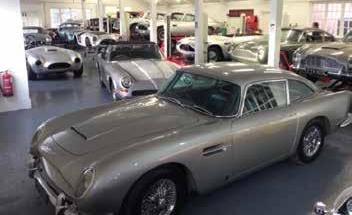



BROOKLANDS BULLETIN | JULY - AUGUST 2020 12
forthcoming events
2020 Museum Events
The Events List is subject to change, so please check the website: www.brooklandsmuseum.com. Email events@brooklandsmuseum. com or telephone the Museum on: 01932 857381 for information. Test Hill, car rides and engine runs are subject to operational conditions.
Due to the Coronavirus situation, all events at the Museum for visitors and Members are cancelled or postponed. For information on these and other Museum events, please check the website. Thank you for your support.
August
9 Brooklands Relived. 10am-5pm. Step back in time to capture the atmosphere of a Brooklands in its heyday during a race day. Car, motorcycle and bicycles welcome and there will be Race Starts on the Finishing Straight, Aircraft Fly-In and parade laps. Check website for details.

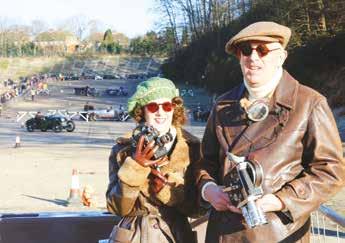
20 Emergency Services Day. 9.30am-5pm. Every type of vehicle and equipment will be on display so you can chat to and find out how our emergency services keep us safe. Check website for details.
September
5 Brooklands Aviation Day. 10am-5pm. Enjoy a day of aviation antics with a Fly-In, Aero Runs, Pedal Planes for under-5s and an aviation-themed workshop in the Shell pagoda. Check website for details.

6 American Day. 10am-5pm. Expect plenty of chrome and noise as Brooklands rumbles to every sort of American car and motorcycle. Check website for details.
26 Historics Classic Car Auction. Parking is available in The Heights off Wellington Way - please follow temporary signage. Entry to auction is by catalogue: £30 (admits two). Contact Edward BridgeStille on: 01753 639170 or auctions@historics.co.uk
October
11 Autumn Motorsport Day. 10am-5pm. Competition cars from all eras will be put the test on the Mercedes-Benz World track and Brooklands Test Hill. Expect to see every type of racing car, including Formula 1, touring cars and Group B rally machinery alongside plenty of classic race cars. Check website for details.
10 Reminiscence Café. 2.30-4pm. For people living with Dementia and the families and carers. Includes hot drink and slice of cake. Entry to the Museum is free, however booking is required. Check website for details.
18 London Bus Museum Transportfest. 10am-5pm. Superb displays of buses from through the decades, plus rare taxies, and military and emergency services vehicles. Check website for details.
November
1 Autumn Motoring Breakfast. 7.30am-9.45am. A chance to see wide variety of vintage and classic cars and motorcycles. Check website for details.
15 Military Vehicles Day. 10am-4pm. Everything from military motorcycles to troop carriers and trucks, plus re-enactment groups in period costume. Check website for details.

JULY - AUGUST 2020 | BROOKLANDS BULLETIN 13
forthcoming events
2020 Members’ Events
August
2 Scenic Car Tour. One-day self-drive car tour. Destination tbc. Check website for details.
September
6 Shere Hill Climb. 9am-5pm. A non-competitive event held in the North Downs. The Outreach Team host a Brooklands Paddock. Money raised is donated to local causes including Brooklands. Check: www.sherehillclimb.co.uk
29 Shelsley Walsh Hill Climb. Road tour to this famous motorsport venue that includes runs up the hill. All vehicles must be road legal and drivers will need a full driving licence. Check website for details.

Talks
For Classic Talks contact: talks@ brooklandsmembers.co.uk; or by telephone 07880 670359. For the MotorSport Legends Series, go to brooklandsmuseum.com/members and follow links for online sales or call Tim or Sarah in the BTM Office: 01932 857381 ext 226. To check the food menu at each Talk please call: 07857 874456 (recorded announcement) available four days before the event.
September
17 7.30-9.30pm. Peter Grimsdale has worked in television and is an author. His latest book High Performance –When Britain Ruled the Roads was inspired by his passion for those who don’t always receive the recognition they should. His talk covers the postwar privateers who built and raced cars on a shoestring, including Brabham, Cooper, Lotus, Tyrell and Walker.
Royal Aeronautical Society
January 2021
October
21 Castle Combe Track Day for Cars. 9am-5pm. Revised date from 21 April. If you have already booked, you will be notified of your options. Put your car through its paces on one of the UK’s most exciting circuits. Check website for details.
20 Film Show
February
17 Talk with Ian Smith, former Chief Flight Engineer BA Concorde fleet and Technical Advisor G-BBDG and Concorde simulator at Brooklands Museum.

BROOKLANDS BULLETIN | JULY - AUGUST 2020 14
Authorised and regulated by the FCA AGREED VALUE UK & EU ROADSIDE ASSISTANCE CLUB MEMBERSHIP DISCOUNT TRACK DAY COVER LIMITED MILEAGE DISCOUNT
Built around classics.
Remember Brooklands in your Will
Since 1907 extraordinary people have been making their mark at Brooklands in the fields of Motorsport, Aviation and Engineering, leaving legacies that still resonate today.
Brooklands Museum depends solely upon income from our visitors and the generosity of our supporters and sponsors to fund the restoration and interpretation of our objects and site.
If you have been inspired by the pioneers of Brooklands, please help us ensure the enjoyment of future generations at the museum by including a gift to Brooklands Museum in your Will.



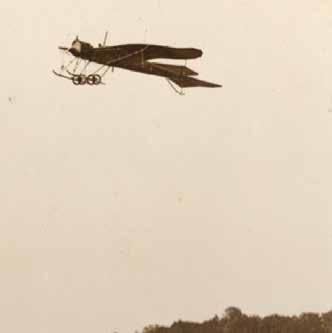
If you would like to receive further information about making a charitable gift in your Will or other ways you can help support Brooklands Museum, please contact the Chief Executive’s O ce: call 01932 857381 ext 243, email tnewbery@brooklandsmuseum.com, or visit our website www.brooklandsmuseum.com













BROOKLANDS BULLETIN | JULY - AUGUST 2020 16 es Cynghordy Llandovery Carmarthenshire, SA20 0NB Tel: 01550 750274 e-mail: info@cambrianway.com www.cambrianway.com 2 Explore some of the best roads and scenery in the UK 2019 / 20 Club Tour Packages Looking for a venue for your club or friends in 2019 20 n d e Stemax ltd Performance engineers GEOFF HARRIS 07860 458 679 |01189 344 140 WWW.GEOFF-HARRIS.CO.UK �������������������������������������������������� •����������������������������� •������������������������ •������������������������������ •����������������������� •�������������������������������� •�������������������������������� • •�������������������������������������������������� visit: www.classiccarinsurance.co.uk email: info@classiccarinsurance.co.uk 01376 574000 call now for an instant quote ask us today about our classic car and bike insurance cover. cla ssic car insurance PBIS specialises in classic car insurance, as well as insurance for other collectable classic vehicles. We have been arranging insurance for your classics for over 30 years, so we know what is important to you. Most of our classic policies include free agreed valuations, roadside assistance and recovery within UK/EU, limited mileage options and discounts for multiple car ownership. Peter Best Insurance Services Ltd Authorised and Regulated by the Financial Conduct Authority. Registration No. 307045 | Registered in England No. 2210270 C M Y CM MY CY CMY K PeterBest_BrooklandsBulletin_Advert_130x180mm.pdf 1 19/08/2019 10:23
Please send letters to the Bulletin on any topic connected with Brooklands to the Alisdair Suttie on: brooklandsbulletineditor@gmail.com

brooklands bulletin Alisdair Suttie on:
Commendable Alvis
reports’ didn’t bother to turn up to the Le Mans 24 Hours in 1928.
At first glance, sixth and ninth in the overall placings by Major CM Harvey/Harold W Purdy and SCH ‘Sammy’ Davis/W Urquhart Dykes respectively might not justify a session of shouting from the rooftops. However, in an entry of 33 starters, further analysis of the results reveals the performances of the Alvis cars were highly commendable. Gaining the first two places in the 1.5-litre class, they were the only all-British car and driver combinations to finish the course.

Furthermore, it should not have been overlooked, although it probably was, that the first five cars (two Bentleys, two Chryslers and a Stutz) had engine capacities in excess of 4-litres. These were substantially larger than those of the duo from Coventry.

Dear Sir,
I enjoyed reading the article ‘Alvis at Brooklands’ by Ken Day. It was another interesting history of a British manufacturer, small in size but large in stature, with a significant Brooklands connection. It would seem the journalists responsible for the ‘derogatory press
Cardboard Concorde
All in all, it was a memorable weekend for the cars displaying the famous red triangle emblem. The drivers had brought their distinguished services from Brooklands to a venue that still hosts the greatest twice around the clock endurance race in Continental Europe.
Yours faithfully
JJR ‘Jim’ Cockburn
On Edge
Dear Sir,
My six-year old son Rupert absolutely loves Concorde and is really missing being able to come to the Museum to see it. Visiting Brooklands is the first thing on his list when the present situation improves sufficiently.
He made a model of Concorde this morning out of scrap paper and cardboard which he wanted to send you. He wanted it to stand up on its wheels like the real one, which was tricky but it worked in the end, as you can see!
Rupert asked you to please say hello to Concorde from him.
Yours sincerely, Anna and Rupert Trevelyan
Editor’s note: Concorde says a supersonic hello back to Rupert!
Setting things Straight
Dear Sir,
I doubt I’m the first to query Question 17 of the quiz in the May-June Bulletin. Is it not true that Whitney Straight was at one time deputy chairman of BEA and later the same at BOAC, and not chairman? A small point, but as Sir Henry Royce opined: ‘Small things make for perfection, but perfection is no small thing.’
Best wishes,
Croydon Parry
Dear Sir,
Did you see the short archive article in Autocar (8 April, 2020) on SF Edge? This was an excerpt from an interview with Edge in July 1907 about his 24hour record-breaking run at Brooklands on 28 June of that year, just after the circuit had opened. Edge had averaged 65.91mph and suggested he could go as high as 75mph. When asked his opinion about talk that racing up to 120mph would be achieved at the track, Edge responded: ‘To race at that speed is asking for accidents of a most frightful character. Events should be limited to machines that cannot exceed 80mph at best.’ Some hope!
Regards
Gareth Tarr
JULY - AUGUST 2020 | BROOKLANDS BULLETIN 17 letters
Alvis’ performance at Le Mans in 1928 against rival cars with much larger engines deserves more recognition says Jim Cockburn.
Rupert Trevelyan with his superb cardboard Concorde model on its wheels.
SF Edge is still making it into print in modern motoring titles more than 100 years after his recordbreaking run of 65.91mph at Brooklands.
Brooklands memories

Dear Sir,
It was a long time ago and I was a thirty-something bachelor with other things on my mind! However, I was a car enthusiast from an early age and, by 1990, had already completed my first major restoration project, though I was only vaguely aware of Brooklands and its history.
My memory of the visit in October 1990 is hazy and opening of the Museum to the public was very limited and this visit was billed as a ‘Public Preview Programme’. I recall the site was very bare and most of the buildings were just empty shells. We were able to look inside the ERA Shed but most of the other buildings were closed.

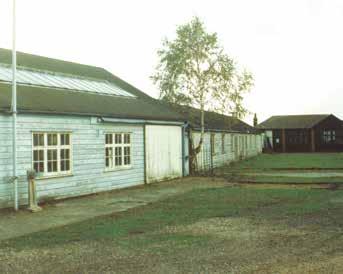
A leaflet handed out to visitors described each of the now very
SHERE HILL CLIMB 2020
ENTRIES ARE NOW CLOSED
Will we or won’t we? Sadly, Boris and his team are currently unable to give us a clear picture of what our ‘lockdown’ status will be in early September. They’ve got rather a lot on their plates at the moment, so it’s unlikely that the fate of the Shere Hill Climb is worrying them too much.
We will be making a decision in early July on whether we can go ahead with our usual line-up of interesting and exciting vehicles safely (and socially) distancing themselves up the hill. We don’t hold out a great deal of hope, but we’re reluctant to cancel too quickly and then find out we could have gone ahead. For any updates, please keep an eye on www.sherehillclimb.co.uk. If we get the green light, it will be all hands to the pumps to make it happen!
STAPLE LANE, GU4 7RL, SUNDAY 6th SEPTEMBER
familiar buildings, but made no reference to contents as there were none. Most notable was the newly restored Clubhouse, although I have no recollection of going inside. It was clear, however, that there had been much work done to the exterior, particularly the roof, the white staircases and the balconies.
I’ve attached a few more scanned items which might be of interest. I presume that archivists have copies of the ‘souvenir booklet’ which was being sold at the time but, if not, I’m happy to scan the rest of it.
Best wishes,
Chris Bound
BROOKLANDS BULLETIN | JULY - AUGUST 2020 18 LETTERS
Chris Bound has fond recollections of visiting Brooklands when the Museum was in its early stages.
BE PART OF THE ACTION sherehillclimb.co.uk


SIR STIRLING MOSS 1929-2020

BROOKLANDS BULLETIN | JULY - AUGUST 2020
The Maserati 250F was highly rated by Stirling Moss among the many cars he raced and he enjoyed considerable success in this car in the 1950s.
Few people in history can truly claim that their name has become so assimilated in the minds of the public that the mere mention of it evokes an instant recognition of the person, his sport and all he stood for with his skill and sportsmanship. In fact, so connected was that name to the image of speed, that it became a badge of honour for any errant motorist to be stopped by the Police with the admonition: ‘Who do you think you are, Stirling Moss?’ When this actually happened to Stirling, as he left Buckingham Palace upon receiving his Knighthood, he replied to the scolding officer: ‘Sir Stirling, actually.’
Stirling Craufurd Moss was born on the 17 September, 1929 to Aileen and Alfred Moss who lived in London. His mother had been a successful rally driver, having herself been encouraged to compete by her parents when lady drivers were still very much a novelty. Alfred, a successful dentist, also had the competitive urge and was a regular competitor at Brooklands and had even competed in the 1924 Indianapolis 500-mile race. With such parents, it was inevitable he would compete in cars once he had graduated from horses, on which he displayed a skill to rival his sister Patricia who was seven years his junior.

Like many would-be racing drivers, Stirling began early and from the age of seven he would drive an old Austin around the family orchard at their home in Tring. The truth was that although he bettered Pat in junior horse trials, he actually hated the things and rode only at his mother’s encouragement. Switching from four legs to four wheels came with the acquisition of

Sir Stirling Moss served as President of the Brooklands Trust. We remember his passion for racing and life.
Words: Philip Strickland Photos: BMW, JD Classics, Lotus, Maserati, Mercedes, Gareth Tarr, WSM
21 JULY - AUGUST 2020 | BROOKLANDS BULLETIN
Stirling Moss and navigator Denis Jenkinson preparing for the start of the 1955 Mille Miglia race in their Mercedes. The pair won at a record-breaking speed of 97.95mph over the 993-mile course.
his first racing car, a Cooper 500. Soon he was winning, despite initial resistance from parents who understood the inherent risks more than most.
Early years
By the age of 19, Stirling was already a force to be reckoned with, often winning several races at a single meeting in a range of cars. It seemed he could make anything go faster than it had ever been driven before and displayed a remarkable smoothness, partly inspired by the relaxed driving style of Dr Giuseppe Farina, the first Formula One World Champion. By 1949, it was clear Stirling was going to earn his living as a racing driver. He had been briefly employed in an hotel, but neither this work, study or dreary office life appealed in the slightest. A chance meeting with Ken Gregory while
he was still working in the hotel led to a lifelong friendship. Ken acted as guide and manager for much of Stirling’s career and it was he who encouraged Stirling to enter the budding Formula 3 Championship, for which the Cooper was designed.

Soon, he began racing on the Continent in both the Cooper and an HWM and quickly came to the attention of the factory teams and that led to an offer from Enzo Ferrari to drive for him in 1951. Stirling jumped at the chance and duly made his way to Maranello, only to discover on arrival that his seat had been taken by local man Piero Taruffi. Stirling never spoke to Enzo Ferrari for 10 years and said of him ‘He is not a gentleman’. Whether this was a misunderstanding or gamesmanship will never be known, but it may have been a critical moment lost in Stirling’s career.
As a direct consequence of this experience, Stirling put all his energy into driving for only British teams. This developed a close and fruitful relationship with Rob Walker, for whom Moss drove many times. In all, Moss entered 67 Grands Prix, starting 66 and winning 16 of them. This was at a time when there were often just eight or nine races in a season, leaving the now highly paid and highly rated Moss to compete in sportscars, saloons and other types of competitive endurance events, such as the Mille Miglia, the Targa Florio and Land Speed record attempts with MG at Bonneville.
It was in a Jaguar C-type equipped with a new type of brake system that Moss, partnered by Norman Dewis, took part in the 1952 Mille Miglia. Testing the pioneering disc brake, Moss was


BROOKLANDS BULLETIN | JULY - AUGUST 2020 22
Even after injuring himself when he fell down a lift shaft at 80-years old, Sir Stirling remained a keen competitor in historic racing.
Wherever he went, Sir Stirling was always able to draw a crowd, shown here in Le Mans, France. His name became synonymous with motorsport and traffic policemen alike.
Stirling Moss mixes his love of women and compact cars as he helps a model out of a BMW Isetta at the British Motor Show in 1957.
running in third place when they hit a rock and damaged the suspension. That performance brought him to the attention of the legendary Alfred Neubauer, team manager for Mercedes, who offered to take Moss on to partner Fangio for the 1955 season.

Success and retirement
Ken Gregory told the wonderful story of their trip to Stuttgart at the end of 1954 to discuss the Mercedes offer. Between them, they hatched a plan to ask for far more than they felt Moss was ever likely to be paid, thinking that if they aimed high, the offer might fall close to what
they really wanted. When the opening offer was made by Neubauer, Moss nearly fell off his chair. So astonished were they both that Neubauer mistakenly thought he had insulted them and greatly increased the figure. It was the highest fee he had received at that time and by 1961 Moss was Britain’s highest paid sportsman.
Now with Mercedes, Moss was entered for the 1955 Mille Miglia and took his old friend Denis Jenkinson as navigator, who had devised a roll-map display to read the pace notes. They won the race at a record average of almost 100mph (97.95mph)
over 993 miles. Later that year, Moss achieved his first Formula One Grand Prix victory at Aintree in the British Grand Prix, beating team-mate Fangio by a whisker.
Other notable performances set him apart, such as his drive in the German Grand Prix of 1961, a race where his underpowered Lotus 21 was pitched against the might of Ferrari with their immaculate and novel shark-nosed 156 model. Over 15 laps of the Nürburgring Nordschlief, he won by 21 seconds in the rain. This drive emulated his earlier all-conquering drive in the same Rob Walker-entered Lotus at Monaco, where he


JULY - AUGUST 2020 | BROOKLANDS BULLETIN 23
The tiny Lotus 18 may have not have been as powerful as its rivals, but Stirling Moss used its superb handling to great effect and won the 1960 Monaco Grand Prix.
Always professional, Stirling Moss manages to look calm and composed after stepping out of the Lotus 18 following his win in the 1960 Monaco Grand Prix.
It’s 1959 and Moss demonstrates his versatility by trying out the Maserati Type 60 ‘Birdcage’ sports car.
ran the car without side panels to combat the intense heat and overpowered a mighty assault from the Ferraris of Ginther, Hill and von Trips.
Ironically, the German Grand Prix was to be his last F1 victory and the last time he would compete against von Trips, who died in the next race at Monza. Driving at the Easter Monday meeting at Goodwood the following spring, Moss once again found himself in an underpowered Lotus 21 fighting a new rival, Graham Hill who was in the ‘Smokestack’ BRM P57 V8. It was the Glover Trophy meeting held on St Georges Day. Moss had repeated gearbox issues and was a lap down as he came up behind eventual winner Hill entering St Mary’s. What happened next has never been explained.
Moss had no recollection of his neardeath impact with the bank on the outside of the bend. Left with severe head injuries and other wounds, Moss was to carry both the scars and the physical consequences of this career-wrecking accident to the end. His long fight to recover after being in a coma for a month was followed by a year of rehabilitation. For the first time in his life, it left him unemployed and effectively unskilled for any other role. Yet he filled the void as only a true champion might by reinventing himself, leading to a brand name that remained in high demand until ill health struck in 2016.
Brooklands role
It was his erstwhile business partner, Ian McGregor, who joined me on the Brooklands Trust Members Committee as Vice Chairman, who thought we might approach Stirling to become our President. Stirling loved the idea of an attachment to the circuit that had given his father so
much pleasure and success, and he willingly served his role with gusto and honour.
Stirling always had to endure the label that he was the ‘greatest driver never to have won the World Championship’. Such a bald description belied the fact that he could have, and perhaps ought to have been, a triple World Champion. In the years 1958, 1959 and 1960, it was only bad

luck that robbed him of just reward for his obvious superiority over those who were crowned in his place.
In truth, Stirling was the most successful Grand Prix driver by far in 1958, yet it was Hawthorn who took the title with a single win to Moss’ four. This came about because of a moral stand taken by Stirling following the end of the Portuguese Grand Prix that year. Moss was comfortably heading for victory in the race by a huge margin and with it the World Championship, when he came up to lap second placed man Hawthorn. When Hawthorn spun and stopped as they both ascended a hill, Hawthorn allowed his Ferrari to roll on the adjoining pavement in an attempt to bumpstart the engine. This meant he was moving against the direction of the circuit, a heinous crime in motor racing, and disqualification ensued. This was a critical decision, for if Hawthorn could keep his second place, he would have been well placed to take the championship. Hawthorn was encouraged by Moss to appeal the disqualification and Stirling appeared at the hearing to support his rival, arguing that the Ferrari had been on the pavement when rolling against the traffic and thus did not contravene the rules. The appeal succeeded and at 11pm


BROOKLANDS BULLETIN | JULY - AUGUST 2020 24
Stirling Moss reckoned the unusual four-wheel drive Ferguson P99 was his favourite Formula 1 car that he drove in anger. This is at Oulton Park in 1959.
Moss picks up the winner’s trophy for the 1959 RAC Tourist Trophy race, which he won in dramatic fashion after swapping in to a different Aston Martin DBR1/300 during the race.
The smooth style that marked out Moss and made him so difficult to beat is clearly visible as he heads towards victory in Monaco in 1960 aboard the Lotus 18.
that night Hawthorn effectively won back the points that would eventually give him the World Championship from Moss by a single point.
Years later I, like many before me, asked Stirling if he had any regrets about that decision. He had none. He said he could never have countenanced being awarded a Championship based on such circumstances. To him it was essential to play by the rules.
During his 14-year career, Stirling had seven major accidents on the track and one major accident off it. Of the racing incidents, he was somewhat dismissive, suggesting that if you are a racer, then accidents will happen. Such a philosophy

was never intended to apply to climbing into a domestic lift. In March 2010, at his gadget-filled home in Mayfair where he had lived for much of his professional life, he fell three storeys when he entered the lift with some luggage, the lift carriage having failed to arrive. Once again, Stirling was to confound the medical world by his rate of recovery. When I visited him a few days after the accident, he was convalescing from surgery on both legs and expected more on his cracked vertebrae. I asked him what the prognosis might be and he replied: ‘I don’t know what the doctors have in mind, but I’m racing in May.’ And he did, even though he was more than 80-years old.
Perhaps the most remarkable quality Stirling possessed, in addition to his exceptional poise and balance in a car, was his accessibility. He was never stuffy nor demanding. He wore his celebrity lightly. He insisted that his telephone number and full address be listed in the telephone directory for all to read. For him, the pleasure of meeting enthusiasts, fellow drivers and the public kept him engaged and young. His skill behind the wheel never deserted him, although when he finally stopped racing it was because he felt he could no longer keep up with those one third of his age. Stirling was an Englishman to the core, which perhaps dictated his steadfast loyalty to British teams when more competitive drives were available. It perhaps explained his enduring love of the sport that defined him, as he defined it. For him, Brooklands embodied the essence of British values even though he never raced here.
Stirling was finally beaten by an infection contracted in December 2016. Were it not for the remarkable care and love he received from his beloved wife Susie, who he married in 1980, his son Elliot and a brilliant nursing team, he may never have survived to Easter Sunday, 2020. As Susie so gently put it: ‘In the end, it was one lap too many.’
Brooklands Trust Members were proud and honoured to have as their President a man of whom it might also be said: ‘Stirling Moss was the greatest driver never to have raced at Brooklands.’
A love of racing, motorsport and people made Sir Stirling Moss a household name and he was very proud to be President of the Brooklands Trust Members.

JULY - AUGUST 2020 | BROOKLANDS BULLETIN 25
Please support the Museum through this uncertain time by looking at our new campaign on the Museum website



#LOVEBROOKLANDS
We have launched this fundraising campaign to go towards keeping the site and collections in good order while the Museum is closed.
Ways in which you can help:
Renew or upgrade your Membership
Make a one-o or regular donation, however small
Wherever possible, please GiftAid your donation
See our webpage on leaving a Legacy
Thank you for your continued support through your Membership, it is truly appreciated.
BROOKLANDSMUSEUM.COM

TAKING ON THE TT
Brooklands Motorcycle Volunteer Colin Wood took on the Isle of Man TT course on his Scott Flying Squirrel. Here’s how he got on.

Words: Colin Wood Photos: Fred Wade, Colin Wood
In late August 2019, a group of Brooklands Motorcycle Volunteers went on their annual trip to the Isle of Man TT for the Classic TT and Manx Grand Prix. I joined them to enter the Classic TT Lap of Honour on my 1937 Scott Flying Squirrel Racer. Four vans were hired, nine bikes loaded, and we were on the road to Liverpool to catch the ferry. The outward crossing was very pleasant and soon we were settled into our Douglas hotel.
The first thing on the agenda the next morning was to start learning the 37-mile circuit. I had a rough idea of the track as I had completed three laps in a car three years previously, but that was not going to be sufficient to learn the detail such as the changes of camber, bridges, kerbs, drains and even trees casting shadows over some parts of the circuit.
The one corner that I could not practice is Governor’s Bridge. This is closed to
everyday traffic and only opened up for race days. It consists of a very tight, slow right-hand bend and was to become a problem on the parade lap.
The Bank Holiday Monday was the big day and, as is often the case, changeable weather on the mountain section had caused a delay to the proceedings. I was assisted by my two ‘carers’, Motorcycle team members Fred Wade and Duncan Headley. However, we were only issued
JULY - AUGUST 2020 | BROOKLANDS BULLETIN 27
Ballaugh Bridge proved a tricky part of the TT course to judge for approach speed, which is why Colin and his Scott Flying Squirrel lived up to the bike’s name as they crested the famous landmark.
with one paddock pass, but after chatting up the secretary Fred was able to secure a second. Their pictures were taken and they looked more like a couple of villains, causing much amusement and leading some to wonder if the authorities had got all of the gang from the Hatton Garden
Job. Annoyingly, it was me, an official rider, that got moved on out of parc fermé by an overzealous marshal who was willing to accept the mugshots, leaving Fred and Duncan to enjoy the bikes

We waited from 1pm to 4pm before there was any movement, and even the paddock marshalls were uncertain when we would finally be off. Some riders had their bikes running for ages, but the problem with my Scott is it’s water-cooled and without air flow through the radiator it can overheat and boil the water. Therefore, I always like to wait until the last moment before starting the bike.
Once the first riders were making a move, I started my Scott and found the bulk of the riders quickly disappeared out onto the circuit. I was further delayed leaving the paddock when I locked a front wheel on the plastic matting used

to protect the grass. As I applied the front brake, the bike slid into the railing and I fought to recover the Scott without dropping it. By the time I got out on the circuit, I must have been plumb last as all the others had disappeared, and my plan to follow a few riders round to show me the way was dashed.
The plunge down Bray Hill was not as daunting as I imagined, but as the realisation of being on the world-famous TT course sank in, I thought to myself this is going to be interesting. On through Quarterbridge and Braddan Bridge, where I knew that Brooklands Volunteer John Gentleman would be marshalling, and I was even able to give him a wave. The Scott was flying, hence the name, I guess! On through more iconic places, The Highlander and Greeba Castle.
Next was Ballacraine and Laurel Bank. All around the circuit spectators were waving and I did my best to wave back. Perhaps they felt sorry for me as the last rider on the road, but I did manage to catch and pass three or four others. On through Kirk Michael and the infamous Ballaugh Bridge. I was not sure how fast to take the bridge, but on arrival found the apex is a lot steeper than I had imagined and promptly took off. After Ballaugh it’s Sulby Bridge, a fast right-
28 BROOKLANDS BULLETIN | JULY - AUGUST 2020
Duncan Headley, left, and Fred Wade, right, acted as Colin’s support team and ‘carers’. Or were they still on the run from the Hatton Garden Job?
The 1937 Scott Flying Squirrel race bike performed faultlessly throughout the Isle of Man Classic TT and Manx Grand Prix week, even when flat out up the rise to Hailwood’s Height.
hander, and then Ginger Hall. Next up is Parliament Square and then Ramsey, another iconic place where once again the spectators were waving, so I tried to put on a good show. Then it’s the famous Ramsey Hairpin and the Gooseneck, after which I was on the legendary mountain. I was not expecting the Scott to perform that well over the mountain, but it did, virtually flat out past The Bungalow and the long drag up Hailwood’s Height. The Scott never missed a beat. I passed Kate’s Cottage and then began the drop down to Creg-ny-Baa, which is magic and I was able to see the crowds waving at the hotel. At least I think they were waving: they could have been telling me to get off the circuit!
After the Creg, it was on to Signpost Corner and then to the awkward Governor’s Bridge, which as previously mentioned cannot be predicted. It’s a very tight and slow right-hand corner. I had gained in confidence all the way round the course but arrived there far too fast and went straight on, scattering a few marshals in the process. Almost immediately, I collected it all back together, proceeded through The Nook and on to Glencrutchery Road for the finish.
The bike and I had completed the course in one piece. I would like to thank all those who assisted in making it possible to complete this very enjoyable event and John Ferris who sponsored my entry. I would like to extend my special thanks to my fellow Motorcycle Volunteers who without their help it would not have happened. Lastly, thanks for the Special Certificate they produced for me after I moaned all week about not having had any acknowledgement from the organisers for completing a successful lap.

The rest of the week was very pleasant, watching the racing and generally socialising. The homeward ferry was far from pleasant, though. According to the others in the group who have done the journey many times, this was the worst crossing anyone could remember. The sight of beefy motorcyclists clad in leathers lying ill on toilet floors was a sight to behold. Still, we were okay but relieved to see Liverpool Docks at the end of what had been a splendid week.

JULY - AUGUST 2020 | BROOKLANDS BULLETIN 29
The Brooklands Motorcycle Volunteers team take a well-earned rest from checking over the Scott.
Colin had to time starting the Scott Flying Squirrel to perfection to avoid it overheating at the start of the lap. A slip on some matting meant Colin was last to leave, but he soon caught and passed others.
BROOKLANDS AND THE BATTLE OF BRITAIN
During the First World War, all motorsport and civil aviation ceased at Brooklands and the entire site was taken over by the War Office. Two main manufacturers of military aircraft emerged during this period, the Sopwith Aviation Company, which produced fighters, and Vickers, which concentrated bombers. In the interwar years, Sopwith ceased trading but re-emerged as Hawker Engineering Ltd, maintaining its focus on single-seat aircraft, while Vickers continued to produce larger civil and military aircraft.
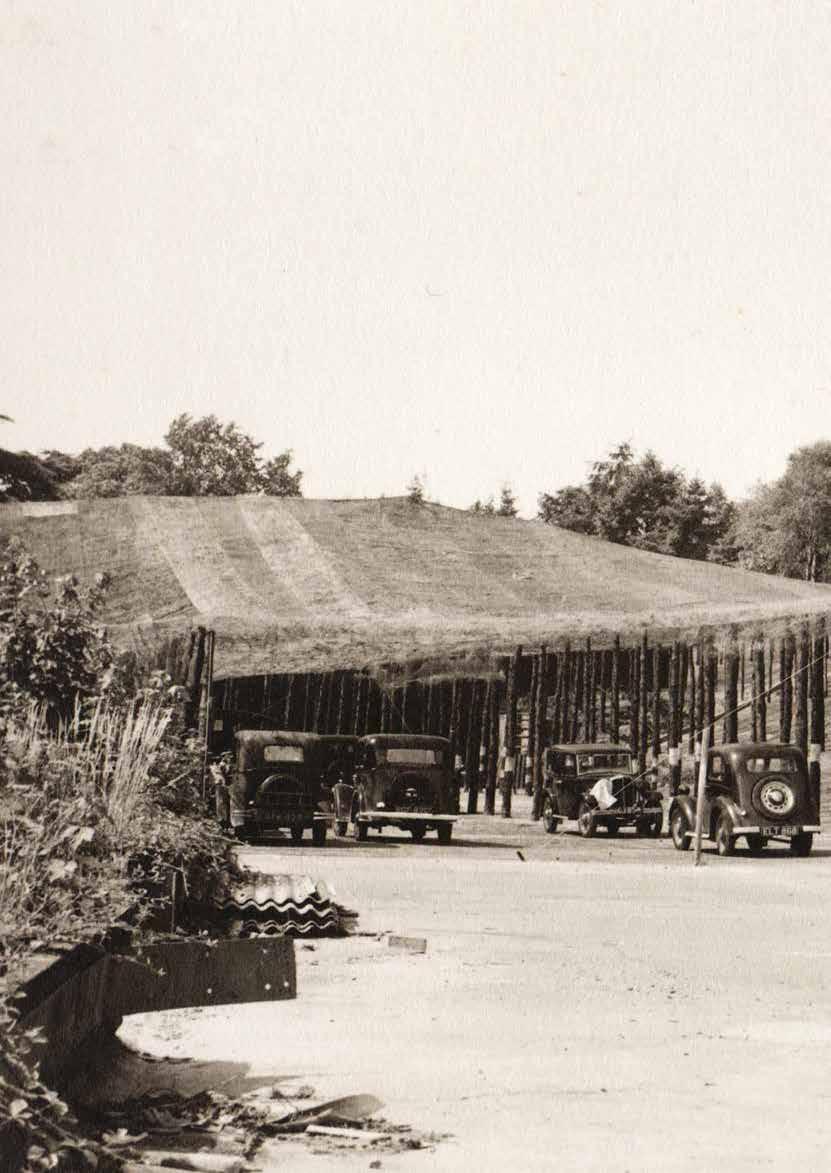
BROOKLANDS
| JULY - AUGUST 2020 30
BULLETIN
German discontent with the terms on which the First World War was settled grew though the 1930s, leading to the election of Adolf Hitler as Chancellor in 1933. Hitler began a rearmament programme and secretly re-established a military air force, the Luftwaffe. In Britain, memories of the First World War were fresh and despite growing evidence that Hitler was intent on war, there was a reluctance to rearm adequately to counter the growing German threat.
Despite Hitler’s increasing belligerence, Britain and Germany enjoyed near-normal relations through the 1930s, with German

motorists and aviators regular attendees at motorsport and aviation events at Brooklands. The location and the layout of Brooklands, and the existence of the Hawker and Vickers factories, was therefore information readily available to the Luftwaffe. Indeed, pre-war reconnaissance photographs of the site were taken, enabling the Luftwaffe to produce a map of Brooklands showing the Hawker and Vickers sites. It was clear that air power would be critical in any conflict and therefore aircraft factories would be a key target.
Though lagging behind the rapid growth of the Luftwaffe, an expansion of the RAF from 75 to 116 squadrons was announced in 1934. Moreover, it was recognised that British aircraft development had slowed considerably after the end of the First World War, and the RAF’s biplane fighters and bombers of the 1930s would be no match for the technologically more advanced German aircraft that were emerging. This was recognised by the management and design teams of both Hawker and Vickers at Brooklands and they embarked on design studies of a
Brooklands played an important role in supplying aircraft for the Battle of Britain. It was also a key target in this crucial airborne conflict.
Words: Harry Sherrard Photos: Brooklands Museum Collection
JULY - AUGUST 2020 | BROOKLANDS BULLETIN 31
Camouflage netting supported on poles can be clearly seen in this image at Brooklands with the banking to the right-hand side. This position was known as W42 during the war years.
more modern and capable monoplane fighter and bomber respectively. From these designs emerged the Hawker Hurricane and the Vickers Wellington.
Britain declared war on Germany in September 1939, following the invasion of Poland. Motorsport at Brooklands stopped and there was an immediate ban on private flying. Through the winter of 1939 to 1940 production of Hurricanes and Wellingtons proceeded apace and, although this period became known as ‘The Phoney War’, due to lack of direct conflict between Britain


and Germany, the breathing space given to Hawker in particular to produce Hurricanes was to prove vital in the conflict to come.
The Phoney War ended in April 1940 when the Germans invaded and occupied Norway. In May, Hitler’s armies headed west and their successful blitzkrieg tactics saw Belgium, Holland and then France surrender that month. More than 300,000 Allied troops were evacuated from the beaches of Dunkirk and it was clear that Britain was the next target.
In view of the seemingly unstoppable German advance, some members of the British Government were in favour of entering into talks with Hitler, who offered terms to Britain in a series of speeches. However, Sir Winston Churchill, appointed Prime Minister on 10 May, 1940 had a total commitment to defeat Nazism and successfully outmanoeuvred the appeasers amongst establishment figures.
In truth, the speed of the German advance to the northern French coastline had surprised even them. No plan and no equipment yet existed for a cross-channel invasion. So, when Hitler’s overtures were rejected, the Germans set about planning Operation Sealion, a seaborne invasion of the south coast of England. The Royal Navy substantially outnumbered the German Kriegsmarine in and around the English Channel, and German naval commanders were all too aware of this. To have any
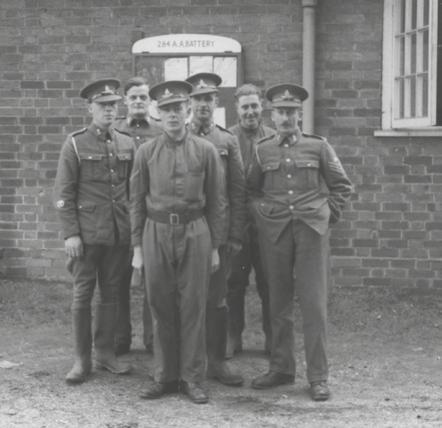 The aerial view of Brooklands was obscured with camouflage. New buildings both genuine and fake were built to confuse enemy bomber aircraft. This image shows the Hawker and Vickers factories.
A group of soldiers from 284 AA Battery based at Brooklands during World War Two to defend it. Some soldiers were from a Canadian detachment. The site was protected by a Bofors anti-aircraft gun.
The effectiveness of netting in hiding and softening the outline of Brooklands’ buildings is easy to see in this image, which was taken at position W43.
The aerial view of Brooklands was obscured with camouflage. New buildings both genuine and fake were built to confuse enemy bomber aircraft. This image shows the Hawker and Vickers factories.
A group of soldiers from 284 AA Battery based at Brooklands during World War Two to defend it. Some soldiers were from a Canadian detachment. The site was protected by a Bofors anti-aircraft gun.
The effectiveness of netting in hiding and softening the outline of Brooklands’ buildings is easy to see in this image, which was taken at position W43.
chance of success, Operation Sealion would have to be preceded by the Luftwaffe securing air superiority over the Channel and southern England. And so, the stage was set for the Battle of Britain.
At the outset of the Battle, the RAF’s Fighter Command had 55 squadrons of which 26 were equipped with Hurricanes, 20 with Spitfires and the other 9 with various other aircraft. On 6 July, 1940 the RAF mustered a total of 871 fighters, against which the Luftwaffe launched more than 3300 aircraft of all types. The odds seemed ominous, but the RAF held several advantages. The Battle was fought over British territory, so Luftwaffe pilots who survived being shot down were taken prisoner, whereas their RAF counterparts could return to service. The Germans’ primary fighter, the Messerschmitt Bf 109, had fuel endurance of just over an hour, meaning a maximum of 20 minutes actual combat time over Britain.
However, the most important factor in the RAF’s favour was the Dowding System. Conceived by Air Chief Marshal Sir Hugh Dowding, the Commander-inChief of Fighter Command, radar stations and observer posts along the southern coast of Britain rapidly fed information about incoming German raids to a central command and control centre. This allowed Fighter Command to marshal its forces by vectoring fighters accurately onto German aircraft. This highly effective battle management enabled the RAF to resist the numerically superior Luftwaffe.

Sir Winston Churchill’s inspirational rhetoric, in particular his speech on 20 August, 1940 when he famously proclaimed that ‘Never in the field of human conflict was so much owed by so many to so few, shone the spotlight on the courage, skill and sacrifice of Fighter Command’s pilots. Even so, Churchill’s speeches, coupled with the dramatic and unique visibility of the aerial battle to the general population in southern England, has led to the tendency for the fighter battle to overshadow other important participants in the resistance to Operation Sealion.
The RAF’s Bomber Command, equipped with Wellingtons as their frontline aircraft,
Hurricane
Although often overshadowed by its more glamorous stablemate, the Supermarine Spitfire, the Brooklands-designed and built Hawker Hurricane outnumbered the Spitfire in the Battle of Britain and accounted for some 55 per cent of hostile aircraft shot down. Hawker’s designer, Sir Sydney Camm, designed the Hurricane in the early 1930s in anticipation of a requirement for a modern monoplane to replace the RAF’s obsolete biplanes. The prototype Hurricane was first flown at Brooklands in November 1935. The design was accepted by the Air Ministry and it entered service in 1937.
The deteriorating international situation led to a large order for Hurricanes and on the outbreak of war in September 1939 about 550 Hurricanes had been built and allocated to a total of 18 squadrons. A further 3500 Hurricanes were on order, with many being built over the winter of 1939 into 1940, just in time for the Battle of Britain. Hawker’s principal aircraft establishment remained Brooklands, but manufacture of the aircraft was subcontracted and dispersed to a number of other engineering businesses.
The Hurricane, like the Spitfire, used the famous Rolls-Royce Merlin 12-cylinder engine, which produced just over 1000hp and could propel the Hurricane to maximum speed of about 325mph. It was armed with eight Browning .303 machine guns.
On the outbreak of the Battle of Britain in July, 1940 the RAF’s general approach was to order Hurricane squadrons to intercept hostile bombers, leaving the slightly faster and more manoeuvrable Spitfires to tackle the Messerschmitt Bf 109s. However, Hurricanes also regularly had dogfights with the German fighter aircraft and, in a remarkable accomplishment, on 7 October, 1940 RAF Hurricane pilot Archie McKellar shot down five Messerschmitts in a single day.
was also heavily engaged throughout the summer of 1940 in offensive operations against German invasion barges and ships being assembled in French and Belgian ports. At this early stage of the war, the pilots were inexperienced and their bombing techniques unsophisticated, with the result that German flak gunners exacted a heavy toll. Indeed, in the official Battle of Britain period from 10 July to 31 October 1940, Bomber Command lost 718 crew, which significantly exceeded Fighter Command’s losses of 544.
Brooklands was only 150 miles from German airfields in northern France and it was an obvious target. To disguise the site, holes were dug in the banking and
trees planted, camouflage netting held up by poles covered the track itself and both real and decoy buildings were erected. Large quantities of green paint were used to conceal the fact that this was an industrial site. A Bofors anti-aircraft gun was installed, pillboxes and air raid shelters were built and a detachment of Canadian troops was charged with the defence of Brooklands.
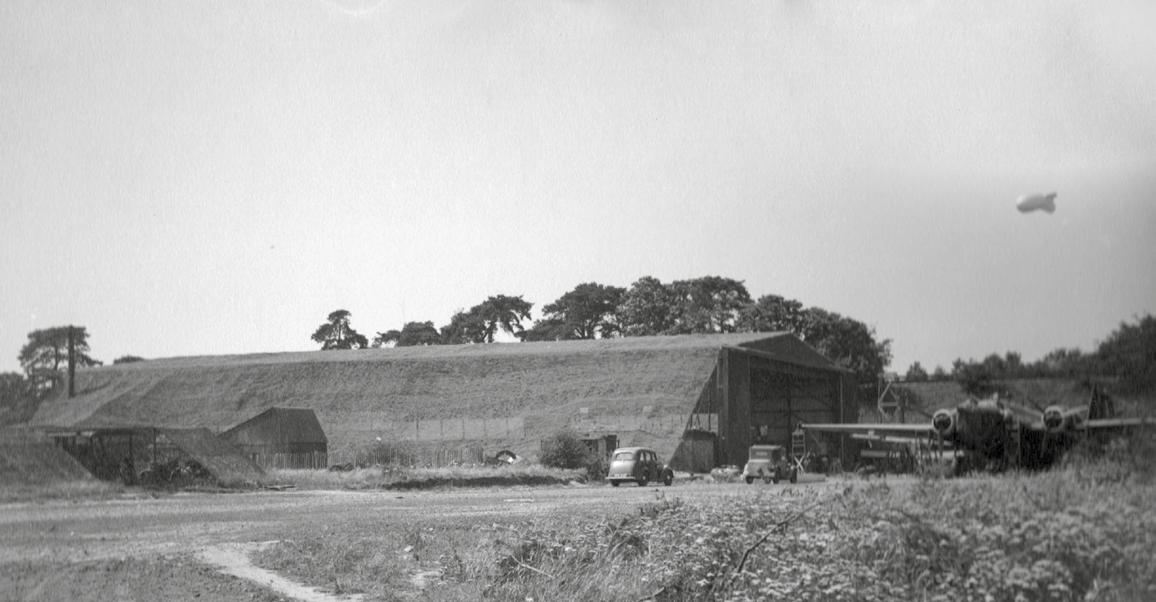
The Luftwaffe mounted a major raid on Brooklands on Wednesday 4 September, 1940 resulting in the death of 84 workers. This raid will be covered in more detail in a subsequent article.
In the early stages of the Battle of Britain, the Luftwaffe had primarily attacked Fighter Command stations in an
The Railway Straight Hangar with its netting in place and what appears to be a Wellington parked to the right of it. A barrage balloon is visible in the sky above as an anti-aircraft measure.
attempt to destroy its infrastructure on the ground. On the direct command of Hitler, in September 1940 the Luftwaffe switched its attention to bombing London and thus began the period that became known as The Blitz. It was a major strategic
Wellington
Vickers’ chief designer, Rex Pierson, commenced design work at Brooklands on what was to become the Wellington in 1932 in response to the Air Ministry’s invitation to tender for the design and production of a twin-engine medium daylight bomber. With Pierson responsible for the overall design, the structural engineering was assigned to Barnes Wallis. Following his previous work on airships
blunder. Fighter Command had been badly damaged by the attacks on its stations and, while Londoners suffered, the respite gave Fighter Command the opportunity to rebuild. Moreover, attacking large formations of German aircraft en route to

London was more effective than defending numerous smaller raids across southern England.
With London continuing to be subject to bombing attacks, the Battle continued into October. As the summer of 1940 gave way to autumn, it was clear that air superiority had not been gained over Fighter Command, the Royal Navy remained in strength in the channel and Bomber Command continued to pummel the wouldbe invasion fleet in the Channel ports. With no prospect of mounting a successful invasion, Operation Sealion was cancelled and the Battle of Britain was won.
and the single-engined Wellesley light bomber, Wallis proposed the use of a fabric covered geodesic airframe for the new bomber. Structural testing of the airframe design at the Royal Aircraft Establishment, Farnborough confirmed that it was much stronger than conventional structures and the design was approved. Bristol Pegasus radial engines, producing 1050hp, were specified.
On 15 June, 1936 the maiden flight of the prototype Wellington took place at Brooklands, flown by Vickers’ chief test pilot Joseph Summers, accompanied by Wallis.

In August 1936, an initial order for 180 Wellingtons was received by Vickers from the Air Ministry and production commenced. By the late 1930s, Wellingtons were being produced at Brooklands at the rate of one per day.
The Wellington had a crew of five, with forward and tail turret gun positions, along with a retractable revolving ventral turret. The turrets were power-operated in order to achieve the speed and manoeuvrability necessary to engage the new German fighters. The Wellington Mk1 had a maximum offensive bomb load of 4500 lb (2,000 kg).
In the early years of the war, the Wellington was the frontline aircraft of Bomber Command. During the Battle of Britain, it played a key role in offensive operations against the German invasion fleet being assembled in Channel ports.
The Wellington holds the twin distinctions of having been the only British bomber that was produced for the duration of the war and being produced in a greater quantity than any other Britishbuilt bomber.

BROOKLANDS BULLETIN | JULY - AUGUST 2020 34
This 1939 shot shows Brooklands how it was before the Battle of Britain started. The track was popular with German racing drivers and aviators before the outbreak of war.
This commemorative book’s cover shows the Vickers Armstrongs factory in the condition it survived the September 1940 air raid, where 84 lives were lost and around 300 workers were injured.
The pursuit of perfection
World-renowned classic Aston Martin specialists since 1968
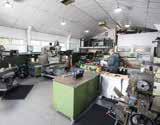
Extensive machine and fabrication facility offering for all marques - CNC milling & turning, line boring, boring and honing, welding specialising in aluminium block & head repairs, cylinder head flowing and conversions to unleaded, precision balancing.



RICHARD STEWART WILLIAMS LTD EST 1968 ASTON MARTIN R.S.Williams Limited, Protech House, Copse Road, Cobham, Surrey, KT11 2TW 01932 868377 | www.rswilliams.co.uk
THE DARLING OF BROOKLANDS
In the second part of Kay Petre’s story, we find out about her racing life and later career as a journalist and automotive designer.
Words: Tim Morris Photos: Brooklands Museum Collection
Kay Petre was very busy in 1935 She gained her gold star by lapping Brooklands at 127.38mph in a Delage and she also purchased another car for herself, Raymond Mays’ 1-5 litre supercharged Riley which she promptly sprayed her favourite shade of blue. The year’s highlight was the famous head-to-head with another very fast lady, Gwenda Stewart, for the title of
‘Brooklands Speed Queen’. Brooklands had arranged for the challenge to take place and the resulting publicity was immense, as expected and desired. Kay herself was not too happy with the furore but saw it as an opportunity to promote Brooklands and women drivers in general.

Gwenda Stewart was driving a powerful 1.6-litre supercharged Derby-Miller and Kay went behind the wheel of the huge Delage
once again. The race was to be a twohander and Gwenda went out in practice, recording a lap of 130mph with Kay following at 134.75mph. No race had ever been run at Brooklands at such astronomical speeds and the Brooklands authorities began to get cold feet. A compromise was decided as it was felt it was far too dangerous to have them racing each other, so they would run three laps individually.
BROOKLANDS BULLETIN | JULY - AUGUST 2020 36
Kay in the Austin single-seater nearest the camera with the works team in 1937. The other drivers are Bert Hadley and Charles Goodacre.
Kay powered away despite the Delage’s slipping clutch and peaked at 134.24mph and Gwenda reached 133.67mph. However, the Derby-Miller’s exhaust blew and she couldn’t complete the run. Kay won the crown, and both were awarded their 130mph Brooklands badges, the only two women ever to do so among a scant handful of men. However, Kay’s reign was short-lived as Gwenda went out again the next day with a repaired exhaust and hit 135.95mph.

Kay returned to Riley in 1935 at Le Mans when she partnered her friend Elsie Wisdom. They were forced to retire that year, but she was back again two years later driving an Austin 7 Grasshopper with George Mangan, but again had to retire. That race was marked by tragedy when the popular driver Pat Fairfield died after trying to avoid a multiple collision.

A works Riley 1.5-litre was entered for Kay in all three of the South African Grands Prix in January, 1937, but she was hampered by incorrect fuel for the car and failed to finish in two of them. She did manage a creditable sixth place in the Grosvenor Grand Prix in Cape Town.
However, the visit was still a memorable one for Kay as she befriended ace German driver Bernd Rosemeyer and he allowed her to drive one of the fabulous and almost unbeatable 6-litre Auto Union Grand Prix cars. The only other woman to drive such a car was Elly Beinhorn, Bernd’s wife. This was one of Kay’s most treasured memories and she coveted a picture of her with Rosemeyer and driver Ernst Von Delius. Sadly, Von Delius was to perish at the German Grand Prix just six months later having collided with Richard Seaman’s Mercedes-Benz.
Accelerating career
Kay’s career was accelerating as fast as her speed on the track and by 1937 she was driving for the Austin works team of single seat racers. She would tour with the dedicated team of drivers and mechanics and this was one of the happiest periods of her life. It was an eventful year for Kay with a near tragedy at Donington during the Empire Trophy when team-mate Charles Dobson had to be dragged from a burning car in the pits, Kay’s own car nearly caught fire when a needle valve broke in the carburettor. At the Nuffield Trophy race later that year, an oil pipe burst spraying her with hot oil and scalding her leg. She got back to the pits with her leg hanging out of the cockpit and her blue overalls soaked green. Back at Brooklands, she took part in the Relay Race, where again she was sprayed with hot oil but the Austin team won the race.
Not only did Kay compete in circuit racing but she also took part in hill climbs
and rallies. In 1937, there was a similar event to the Brooklands Speed Queen at Shelsley Walsh. Kay was up against other lady drivers and Brooklands favourites including old team-mates Eileen Ellison, Joan Richmond, Elsie Wisdom and Doreen Evans. Kay was in her supercharged Austin and Doreen inevitably in an MG managed equal times and so a final head-to-head was agreed, with Kay recording a storming time of 43.8 seconds to take the title of fastest woman at Shelsley Walsh.
It all ended in near tragedy, though, in September 1937 when Kay was practicing for the BRDC 500 mile race on the Byfleet Banking in her single-seat Austin. Reg Parnell, driving a much bigger MG Magnette, lost control in an overtaking manoeuvre on the banking above her and plummeted down the slope hitting Kay’s car and causing it to roll. She suffered serious head injuries and her life was in peril for several days. When she began to recover, her body was partially paralysed but that eventually eased into just a partial paralysis of one side of her face.
Once she had recovered, she campaigned for Reg Parnell to retain his competition licence which had been revoked following the accident as she considered it just to be a simple racing incident. It was very much due to her persistence with the authorities that he was finally reinstated. They remained good friends and Reg went on to become a wellknown Grand Prix driver after the war.
Kay was also determined to get back on the track to show that she had not lost her confidence. She did so in March, 1938
JULY - AUGUST 2020 | BROOKLANDS BULLETIN 37
Kay and Doreen Evans at Shelsley Walsh in 1937 during another all-women driver contest to see who would be quickest up this hill climb. In the end, Kay took the win with a time of 43.8 seconds.













Period style seat belts for pre-1973 vehicles, not forgetting your modern classic post-1973 • Seat belts and harnesses supplied and fitted • Bespoke service • Original belts refurbished • New original equipment available on certain vehicles T: 0208 206 0101 E: sales@quickfitsbs.com W: quickfitsbs.com Be safe not sorry, in your classic! DISCOUNT10%TOBTM MEMBERS
with her Riley. However, this was to be her last appearance on track at Brooklands as her confidence and ability had, sadly, not returned. Her well-tuned Riley’s engine was later used by Percy Maclure in his own Riley the following year.

It seemed bad luck was haunting Kay. Having recovered sufficiently, she returned to Brooklands as a spectator and, in May 1938, she and a group of friends including such Brooklands luminaries as Noel Pope, Betty Haig, Jill Thomas and Douglas Hawkes were walking back to the pits along the bottom of the track as the Junior Car Club International Trophy Race was taking place. Just after John Cobb had pulled away in his Bentley to start the race, Joseph Paul was powering his V12 Delage up the Finishing Straight and past the pits when it burst into flames. As the heat became too intense, he indicated left with his arm and started to pull over but a fast moving Darracq, driven by Lace, collided with him and both cars swerved up the safety bank and crashed through a wooden paling. It plunged down the other side where the Delage pinned a female spectator, who was pulled

out by the crowd but unfortunately died at the scene. Joseph Paul leapt from his blazing Delage with his overalls on fire and suffered concussion and severe burns. Lace recovered the Darracq and, unbelievably, re-joined the race later. Races were not stopped for such incidents at that time and it was won by Percy Maclure, driving without a helmet, in a Riley 6 and just pipped Raymond Mays in his ERA. As a result of the accident, Kay suffered further head and facial injuries and her friends in the group were also wounded, including Murray Jamieson, an Austin designer, who died later from his injuries.
Racing retirement
Kay retired from circuit racing but, still craving competition, she took up more rallying, initially as a navigator with the Singer team. She drove in the Alpine rally with Jackie Astbury and felt it was as near to road or circuit racing as you could get, particularly on the timed sections. She also navigated with Joan Richmond in the RAC Rally in a Riley and the Monte Carlo Rally, starting from John O’Groats in a Railton. She also began to write about motoring matters for
the Kemsley group of newspapers. On one such assignment for the Daily Sketch while covering the Monte Carlo rally in 1939, Kay was driving a group of friends to dinner at the Hotel Ermitage in Digne. Approaching a dangerous crossroads bad luck visited again when she was in a head-on collision with a lorry. Fellow journalist Major Reggie Empson was killed outright in the passenger seat and Kay was rushed to hospital once again with more head injuries. Following the accident, matters got worse for Kay and she was charged with manslaughter and the lorry driver was also charged. Kay, however, was not convicted and the matter was settled out of court by the Petres paying £4000 (£183,000 today) in damages to Empson’s widow.
Despite this, Kay continued with her writing career and became the first woman to be accepted into the British Guild of Motoring Writers. When war broke out, she worked for the Ministry of Food, writing about nutritional matters to help the public feed themselves during the conflict. After the war, she continued as a food columnist for the Daily Sketch and also as a motoring correspondent for the Daily Graphic. At the Graphic, she would conduct road tests on new cars such as the time in 1950 she took the new Armstrong-Siddeley 18hp Lancaster on a 1000mile continental road trip.
In 1952, she returned to Austin and was appointed the colour consultant for the company’s range of cars. This included the Austin A40 and the new Mini for which she designed interior fabrics as well. She based her colour choices on the modern shades found in the home of

 Kay, centre, takes time away from driving to spectate from the Fork pits during the BRDC 500 race in 1936. She’s with Charles Goodacre, left, and Jack Pierce, right.
Kay, centre, takes time away from driving to spectate from the Fork pits during the BRDC 500 race in 1936. She’s with Charles Goodacre, left, and Jack Pierce, right.
JULY - AUGUST 2020 | BROOKLANDS BULLETIN 39
This cartoon shows how glamorous Kay Petre was and also gives a good idea of her favourite shade of blue, here seen on an Austin single-seat race car.













THE FINEST CARS. THE BEST EXPERIENCE www.historics.co.uk See all consignments and to register to bid: + 44 (0)1753 639170 auctions@historics.co.uk www.historics.co.uk Aintree 1961. © Liverpool Echo
the 1950s, but her ideas were perhaps a little too radical for Austin and were often not adopted. One of the colours for both of those cars was a very pale blue, Kay’s favourite colour, and very similar to her own overalls and racing cars, so perhaps some were used.



Leonard Lord continued her employment when Austin was absorbed by the British Motor Company. Sadly though, Kay’s succession of serious head injuries caused her problems as she approached her mid-fifties, and she retired suffering from recurring headaches and


Stewart. memory loss. Henry Petre had always supported his wife throughout her enormous successes and deep tragedies, and it was a great loss for her when he died in 1962 at the age of 77. She returned to Canada, yet despite her fondness for winter sports she found it too cold and returned to London in the mid-1960s, living in St John’s Wood.
She died in Parkwood House, a care home in Camden on the 10 August, 1994 at the age of 91 years. She returned to Canada one final time to be interred in the grave of her brother, Robert, and his wife in the St James’ Cemetery, Toronto. Her newspaper obituary was written by Brooklands Member and original custodian of the Brooklands photo archive, Dr Norman Barfield.

Two years later, she was inducted into the Canadian Motorsport Hall of Fame where her nephew Dave Defries summed her up: ‘She was certainly the firecracker in our family and there was always a sense of awe when you were around her.’

JULY - AUGUST 2020 | BROOKLANDS BULLETIN 41
The interior of the 1959 Mini that Kay helped to design the fabrics and colours for. She worked on a number of Austin interiors and continued to work for the company when it became part of BMC.
This press cutting shows the terrible damage to Kay’s single-seat Austin after Reg Parnell’s car collided with it. Kay later campaigned for Parnell’s race licence to be reinstated.
The huge size of the Delage can be gauged in this photo with Kay at the wheel. She drove this car to 134.75mph during her head-to-head dual with Gwenda
Kay’s grave in the St James’ Cemetery, Toronto, Canada where she is buried with her brother Robert and his wife Kyra. Her nephew Dave Defries summed Kay up as a ‘firecracker’.
JTI is proud to support Brooklands Museum

Japan Tobacco International (JTI) is a member of the Japan Tobacco Group of Companies, a leading international tobacco manufacturer
As the UK’s number 1 tobacco company1 we are recognised by our globally renowned brands
Behind
1 Nielsen Market Track MAT Nov 16 (combined cigarettes and RYO volume, RYO converted at 0 4g per stick)
their success is a company whose own corporate brand is lived everyday through the actions and behaviours of our employees Our UK head o ce is based in Weybridge, Surrey. jti.com/uk
members’ matters
by Tim Morris
Membership update

We are now more than two months into lockdown and we haven’t been able to meet face to face or enjoy the various events at the Museum and within the Members group. However, we have been able to stay in touch with you and the Bulletin is a shining example of that with two editions published during this period so far.
Online, the Members and Museum have been working overtime to bring extra content you can view or take part in from home. The Museum has provided games and puzzles, interviews with Volunteers and a look at some of the smaller items from the archives in their #CollectionCloseUp series. The Members have been posting rare images, crosswords and spot the difference competitions for light relief. We have been seeking out some of our friends in lockdown and strong-arming them into chats online via Zoom. You can find plenty of videos now on our BM.tv Vimeo channel including motorcycling raconteur Steve Parrish, journalist Simon Taylor on his friend Sir Stirling Moss, and Formula E racing driver Sam Bird. There are also films with former Museum Director Allan Winn on ‘his’ car - the Napier-Railton, aviatrix Tracey Curtis-Taylor, art lessons from Richard Wheatland, and we have more arriving all the time. You can access all of this from the website or our social media channels.
Lockdown is easing and we are hopeful the Museum can reopen in some way in the foreseeable future. To that end, a survey has been sent to Members via email in two parts. The first went out at the beginning of June to half the membership to ask your thoughts on what to expect when the Museum does reopen. The second will go out a few weeks prior to the actual planned opening of the gates as we suspect that guidelines will have changed again by that point. We thank you for completing the survey and helping the Museum in its future planning.
Members have shown great support for the Museum, with many of you renewing as normal or pausing your membership in April at the height of the pandemic. Many have also very generously made additional donations when renewing and the Museum’s #LoveBrooklands fundraising campaign has raised a significant sum, much of which came from Members and Volunteers.

We are still working pretty much as usual in the Membership office with Sarah valiantly answering the phone and helping with your enquiries.
In Memory of…
Sadly, each issue we do lose some of our Members and we’d like to pass on the condolences of the Brooklands Members, Chairman and Committee to the families of the following who we have been notified have recently passed away.

Mrs Barbara Gahagan, a Club Level Member for nearly seven years. Her husband Roger continues the Membership.
Graham Fisher, a Member for 18 months. His membership is continued by his family.
Mr Jeffery Goodall, a Member for a year, who enjoyed visiting the Museum with his wife and grandchildren.
Mr Barry Sayers, a Club Level Member for more than eight years and whose family and friends are hoping to celebrate his life at Brooklands later this year.
JULY - AUGUST 2020 | BROOKLANDS BULLETIN 43
Tim Morris and Sarah Dover have been running the Membership office as efficiently as ever while working from home.
Steve Castle chats to racing driver Sam Bird about competing in Formula E. You can watch the whole interview on BM.tv.
My favourite… aircraft
In the first of a series looking at items in the Brooklands Museum, Martin Gegg explains why the Hawker Siddeley Harrier narrowly beats Concorde as his favourite Brookland’s aircraft.
Photos: Crown Copyright
The Harrier earns its place as my favourite aircraft because it ticks all the boxes of British innovation and outstanding engineering. It performed well beyond its original concept and is also a beautiful looking aircraft.
In the 1960s, development of a sub-sonic aircraft seemed at odds with other advances in aviation. However, during the Cold War, NATO faced a real threat in mainland Europe. The Harrier with Vertical/Short Take-off and Landing (VSTOL) capabilities was designed to perform close support and reconnaissance in Europe, operating from makeshift runways such as motorways and forest clearings.

The Harrier story begins in the late 1950s and the result was the Hawker P.1127 prototype which, after its first flight on 19 November, 1960 proved the concept of a VSTOL strike aircraft. The P.1127 developed further into the Kestrel, the forerunner of the first production Harrier GR1. Powered by a Rolls-Royce Pegasus engine, the key to its VSTOL capability was Vectored Thrust, which directed the engine’s thrust through four
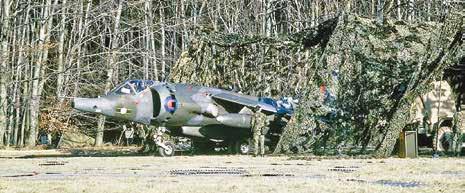
nozzles to enable forward, vertical or even reverse flight.
For me, the development of vertical flight by a fixed wing aircraft beats supersonic flight because speed is an inevitable product of development, whereas VSTOL is a result of innovation. Sir Thomas Sopwith, who co-founded the Hawker Aircraft Company in 1920, said: ‘When I saw the Harrier hovering and flying backwards under control, I reckoned I’d seen everything.’
The Harrier GR1 entered RAF service in April 1969. The same year, it won the Daily Mail Transatlantic Air Race for the fastest flight between London and New York. The Harrier was deployed to Germany for its intended role, but it was in 1982 during the Falklands Conflict alongside its Sea Harrier variant that it really proved itself. It maintained strategic air superiority against the well-equipped Argentine Air Force (FAA) and Naval Air Force (CANA).
An equally important role was the defence of the Royal Navy fleet and the
many supply ships and tankers around the islands. Harrier pilots described the aircraft as unforgiving to fly, but they were able to succeed against the much faster attackers. Using the vectored thrust in a manoeuvre known as ‘viffing’, pilots were able to pull sharply over or up allowing a pursuing fast jet to pass and leave the attacker instantly vulnerable to a counterattack.
By 1982, the UK armed forces had converted merchant naval ships to launch Harriers from and successfully tested this during the Falklands conflict. It led to the Skyhook Project to enable aircraft to be deployed and retrieved via a crane attached to a ship. British Aerospace tested the concept on land but took it no further.
The Harrier continued in service in various forms with British Armed Forces as well as the US Marine Corps, Italian, Spanish Indian and Thai Naval forces. The UK’s Harriers were decommissioned in 2011 and sold to the USA. It appears the US Marine Corps still operates AV-8B Harriers. Twelve McDonnall Douglas EAV-8B Matador 2+ (a Harrier 2 variant) may still be in service with the Spanish Navy, which means that on 11 November 2020 the Harrier, including prototypes, will have been in the air for 60 years. A remarkable achievement for a military aircraft which externally has changed very little since its initial prototype.
Tell us about your favourite Brooklands exhibit or object by getting in touch with the Editor at:
brooklandsbulletineditor@gmail.com
BROOKLANDS BULLETIN | JULY - AUGUST 2020 44 member’s matters
David Slater 1930-2020
It is with regret that we announce the death of David Slater at the end of March in Kirkcaldy, Scotland at the age of 90.

Despite the distance away he lived, almost under the Forth Road Bridge, David was a Member for a number of years and always keen to visit the Museum when coming to see his daughter and son-in law in Weybridge. He was always an enthusiast for Brooklands and the Museum.
He read of the classic days of racing as a boy in Derby and followed post-war racing, although he never had the finances to compete himself. His principle interest was in motorcycles and he enjoyed renovating classic machines in his garage at home. He had a variety of motorcycles, mopeds and cyclomotors, and even ventured as far as a soft top Reliant Regal which we think he saw as a poor man’s version of the Morgan he should have had.
Although he did not have a son to take to the Grands Prix, having a daughter with a house on the old racetrack at The Fork was a good second best. We could never quite agree on the full reinstatement of the track as we felt that cars passing our front door at 140mph, while impressive might be a bit bothersome.
When times return to normal again, we would like to donate some of his library and artworks to the Members Talks draws which would be just the sort of thing he would appreciate.
Karen and Paul Stainsby
John Burch’s memories
At the Brooklands New Year’s Day classic show this year, I was pleased to find the exact replica of my Father’s first car, a 1937 Ford 8 Popular. He bought a secondhand one in 1938, registration DPC 662, and I remember him arriving home in it for the first time. I was four-years old and my brother and I were playing in the small drive of our house when he arrived at the gate and tooted the horn.

We rushed up the drive not even knowing that he was going to buy a car, got in it and off we went, with Mum of course who had come out to see what all the noise was about. He kept this car all through the war in the garage up on blocks so that it would not ruin the tyres. After the war, we went on holidays in it down to Devon, Somerset and also
Brighton at the weekends. He sold it in 1952 for £100 and bought a new Ford Consul.
My father had been a motorcyclist in the 1920s when he owned a Rudge Multi. I assume that the dropped handlebars on the bike are due to the fact that he was sometimes called out to do time keeping for Brooklands Motorcycle Races because he was an Official AAA timekeeper and starter. He worked at the National Physical Laboratory in Teddington in the Metrology Department, which included making sure the stop watches used for AAA races and the 1948 Olympic Games were accurate in all weather conditions.
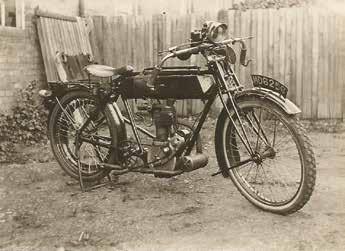
I also have several photos taken by my Father at Waddington Airfield,
Lincolnshire where he was stationed during the First World War. Most of them are of crashed aircraft and he has written on the back whether the pilot survived or not. There is also one of the first Handley Page bombers delivered to the RFC that is very similar to the Vickers Vimy. I know this is nothing to do with Brooklands but it is about the first world war aeroplanes and some might have been made at Brooklands. I wrote an article about him and his time at Waddington for the Cross and Cockade Magazine which is for people interested in WW1 aeroplanes.
Thanks for the New Year’s Day show and seeing the Ford 8 that brought back these happy memories.
John Burch
JULY - AUGUST 2020 | BROOKLANDS BULLETIN 45 members’ matters
The Ford 8 Popular at the Brooklands New Year’s Day Gathering that brought back happy memories for John Burch.
The Rudge Multi owned by John Burch’s father with dropped handlebars. His father used the bike to attend Brooklands race meetings as a timekeeper and starter.


BROOKLANDS BULLETIN | JULY - AUGUST 2020 46 THE BEST MAGAZINE FOR CARS FROM THE DAWN OF MOTORING TO THE 1950S Subscribe online at www.theautomobile.co.uk
reviews
Wallis remembered
Sir Barnes Wallis is inextricably linked with Brooklands for his work on Vickers aircraft and the bouncing bomb developed from Operation Chastise. While these areas of Wallis’ life and career have been well documented, the periods before and, especially, later in his life are less touched upon. This is where Sir Barnes Wallis – A Commemoration of his Life and Career adds to the picture we have of this great engineer.
Written by Vivien White, Sir Barnes Wallis – A Commemoration of his Life and Career is not a warts and all biography. It is a much more affectionate look at Wallis’ life and career put together for the Effingham Residents Association originally to mark the 40th anniversary of Barnes Wallis’ death. Even so, it is a comprehensive look at his work and also has more on his family life than you would expect to find in other biographies.
Alongside the details of Wallis at home, where he was a dedicated father and grandfather, Sir Barnes Wallis – A Commemoration of his Life and Career includes a large number of family photographs that make the £5 price of the work more than good value. Many of the images show Wallis at leisure at his beloved home White Hill in Effingham, as well as others of him on holiday or helping his former school Christ’s Hospital that he did so much to support during his retirement.
Affordable bus journey
Brooklands Members with an interest in larger vehicles and the London Bus Museum will find James Taylor’s latest book an intriguing volume. It is quite slim at 64 pages in total, but Motor Coaches and Charabancs still manages to be acceptably comprehensive.
Taylor’s clear writing style helps make this book accessible to more than just a small core of enthusiasts while also offering sufficient detail to inform those readers with a deeper knowledge. While it doesn’t delve far into any single manufacturer or coachbuilder, it does successfully chart the changes in design and development of buses from the period when many visitors to Brooklands would have used them. It also looks at the post-war era where low-cost travel was more important as travel firms had to compete with increasingly cheap holiday flights.
There is also plenty of detail on the changing regulations governing coach operators, especially in the wake of the Second World War. It makes Motor Coaches and Charabancs an interesting read from a social perspective. Alongside this, Taylor has sourced a wealth of images to illustrate the book and make it easy to digest even for those with only a passing interest in the subject.
At £8.99, Motor Coaches and Charabancs is an inexpensive dip into the subject matter and a good addition to Shire Books other heritage titles that includes one about Land Speed Records.
Alisdair Suttie
Motor Coaches and Charabancs by James Taylor is priced £8.99. Published by Shire Books: ISBN 978-1-78442-412-1

As an introduction to one of Brooklands most important figures, Vivien White has found a good balance between obvious affection for the subject of the book and sound objectivity. Sir Barnes Wallis – A Commemoration of his Life and Career is available from the Effingham Residents Association and is a worthwhile addition to any Brooklands book shelf.
 Paul Bailey
Paul Bailey
JULY - AUGUST 2020 | BROOKLANDS BULLETIN
Sir Barnes Wallis – A Commemoration of his Life and Career by Vivien White is priced £5. Published by Effingham Residents Association.
47
You can see a BM.tv interview with Vivien White and Elisabeth Gaunt, Sir Barnes Wallis’ daughter, here: vimeo.com/ brooklandsmembers
Risk and reward
Richard Noble will be familiar to many Brooklands Members. Whether for his Land Speed Record bids or work in the aviation field, Noble is an innovator and entrepreneur at heart who is very much in the mould of many of the famous names from Brooklands’ past.
Unlike so many who dare to push the boundaries beyond the known limits, Richard Noble is not afraid to acknowledge his mistakes and failures in this autobiography. If anything, it’s the acceptance of them that makes the book more rewarding to read as you gain a greater understanding of what is involved in bringing a record attempt to fruition.
As you might expect of someone who has never chosen the easy route to success, Take Risk! does not bother with the usual autobiography format. There is no preamble about Noble’s childhood or school life other than to mention he remembers watching John Cobb’s boat Crusader on Loch Ness as Cobb tried for a water-borne record. Indeed, Noble’s opening line states: ‘This was never going to be a normal book.’
Instead, what we get is a romp through Noble’s career of setting seemingly impossible targets and then, often, exceeding them. It’s a tale of near disasters and continual under-funding, much of it due to what Noble sees as an overly cautious approach from British business when it should be championing its engineering and technological excellence.
Thankfully, Noble’s writing is every bit as self-effacing as he is in person. It would too easy for another writer to stray into bragging about the successes of Thrust 2, ThrustSSC and the JCB DieselMax projects. Yet Noble takes the reader with him on the adventure of running these campaigns, raising the money and dealing with banks, sponsors and government departments.
Many of these behind the scenes stories are where the real interest in Take Risk! lies. It demonstrates why it takes so long to
funds and when you have to deal with government departments that promise money yet fail to deliver even when Noble and his team have gone way beyond any bar set to qualify for support.
In spite of this, Noble is unstinting in his praise for the work of the many designers, engineers and workforce that it took to get any of his projects from an idea to reality. Brooklands Members will be particularly interested in the areas where Ron Ayers comes into the book with his help on the aerodynamics of ThrustSSC.


Given Brooklands strong connections with record-breaking and Land Speed Record cars, Take Risk! is a valuable insight into the mindset of the people who take on these Herculean tasks. Noble is also good at acknowledging the lessons he and his team learned along the way from those who went before him, such as Campbell, Cobb and Railton. The only thing he doesn’t really touch on is the personal cost to him and his family of his tireless pursuit of success in the most difficult areas, but then this isn’t your average autobiography.
Richard Noble is planning a series of talks, including at Brooklands, when the current situation allows. For anyone with an interest in record-breaking, whether it’s from the driver’s seat or boardroom table, a talk with Noble will be fascinating given how exciting Take Risk! is to read.
The book is available as an e-book for £7.99 to download or as an audiobook for £16.99. The hardback version includes plenty of Richard Noble’s own photographs, which again give an insight into his trials and tribulations on land and in the air. Take Risk! is thoroughly recommended.
Alisdair Suttie
Take Risk! by Richard Noble is priced £19.99. Published by Evro Publishing: ISBN 978-1-910505-51-9

BROOKLANDS BULLETIN | JULY - AUGUST 2020 48
REVIEWS
Castrol’s Classic Oils are produced to original viscosities and contain the necessary anti-wear additives to provide overall protection of veteran, vintage and classic vehicles


Stemax ltd Performance engineers

Original Castrol grades:
XL30, XXL40, GP50, XL20w/50 R40, 10w/60 syn., EP80, EP90 ST90, EP140, D140, LS, B373 TQD TQF, RR363, Brake Fluids Greases, Semi-Fluid greases etc
Castrol Classic Oils +44 (0)1954 231668






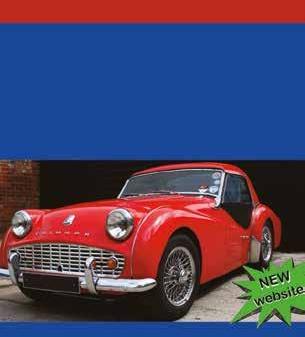
sales@classicoils co uk

l Small size from 500ml to Home Workshop sizesFree UK mainlandNext Day Delivery offers







www.castrol.com/uk/classics


Valvemaster™ & Valvemaster™ Plus Octane Boost Improves performance, protects against valve seat recession and fuel system corrosion Valvemaster™ Plu raises fuel by up to 2 octane Classic Valvemaster™ formerly branded as Castrol Valvemaster™

l Engine protection in all driving conditions



l Octane Boost for all unleaded fuels
l One bottle treats 250 litres of fuel

l FBHVC endorsed - most effective additive



Classic Valvemaster™ +44 (0)1954 231668

sales@classicvalvemaster co uk


www.classicvalvemaster.co.uk

Cynghordy Llandovery Carmarthenshire, SA20 0NB
Tel:
The Greenwood Family are directly involved in the running of the Company, ensuring that your wishes are carried out with the utmost dignity and a�en�on to detail.
We Have Branches Across Surrey and S W London

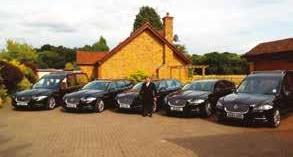



JULY - AUGUST 2020 | BROOKLANDS BULLETIN 49
HARRIS
679
140 WWW.GEOFF-HARRIS.CO.UK ar 0 tc Alan Greenwood & Sons Q y Funerals at a Fair Price ebsite for ll Details of Ou ices and to View all a nwo u Caring and Compassionate Service 24 hours 365 days Latest Jaguar or Mercedes Funeral Vehicles Golden Charter Pre-paid Funeral Plans
and
GEOFF
07860 458
|01189 344
Home Visit Arrangements
Memorials
y
13:32 Page 2
Alan
&
Quality Funerals at a Fair Price Please Visit Our Website for Full Details of Our Services and to View all Our Online Obituaries www.alangreenwoodfunerals.com nate Service 24 hou ays Mercedes Funeral V r Pre-paid Funeral Plans ngements and Memorials Th dir the running of the you ied out with the y and etail. East Surrey Area Office 020 8546 3960 West Surrey Area Office 01483 210 222 Across Surrey and S W London
Greenwood
Sons
01550 750274 e-mail: info@cambrianway.com www.cambrianway.com 2 Explore some of the best roads and scenery in the UK 2019 / 20 Club Tour Packages Looking for a venue for your club or friends in 2019 or 2020 contact us to discuss packages and dates. We already have 18 clubs booked in 2019 & 7 for 2020 Tours include dinner, bed & breakfast, drinks reception on 1st night, a welcome pack containing a memento of the weekend, rally plate, window sticker, Ordnance Survey Mid & South Wales road map, road books containing the route for each day & entry to a local attraction.
from £252.50 per person for 3 night tour. 2019 ALL MAKE TOUR DATES
to any Make & Age of Car 5th to 8th July – 11 cars booked, 2 rooms left 5th to 8th August – 4 cars booked, 7 rooms left brooklands bulletin TO ADVERTISE IN THE NEXT ISSUE OF BROOKLANDS MUSEUM 187,000 VISITORS PA (2018) • A4 • FULL COLOUR • 10,000 MEMBERS • 6 ISSUES PER YEAR • 52 PAGES brooklands bulletin The Journal Brooklands SEPTEMBER 2019 Relived comes to life Bentley mystery revealed Gwenda Stewart profile Vickers-Armstrong memoir brooklands bulletin The Journal Brooklands NOVEMBER 2019 Concorde: 50 years on from going supersonic brooklands bulletin The Journal Brooklands JANUARY FEBRUARY 2020 Making of the Wellington Alvis at Brooklands Hurricane restoration I THE GREATEST WOMAN DRIVER O SAVING THE PLANE THAT SAVED THE WORLD I RETURN TO RACING BENTLEY MYSTERY UNRAVELLED B CONTACT NICK ON 01452 730770 OR EMAIL nick@hinemarketing.co.uk MARCH APRIL brooklands bulletin Viscount: turboprop pioneer 2020.indd
Prices
Open
COLLECTION
Brooklands Members
Members’ Administrator
Tim Morris 01932 857381 ext 226 members@brooklandsmuseum.com
Members’ Assistant Administrator
Sarah Dover 01932 857381 ext 226 Mon-Fri
Chairman Neil Bailey 07970 206778 chairman@brooklandsmembers.co.uk
Secretary Kevin Lee 01932 562246 kevin@abbeywalls.com
Tours and Trips
Angela Hume 07884 184882 Angelahume@brooklandsmembers.co.uk
Outreach
David Norfolk 01372 373929 david@davidnorfolk.wanadoo.co.uk
Talks Steve Clarke 07860 355525 steveclarke@brooklandsmembers.co.uk
Bulletin Editor
Alisdair Suttie 07768 372440 brooklandsbulletineditor@gmail.com
Contributors
Katherine Allen, John Burch, Steve Castle, Steve Clarke, Debbie Crawt, Martin Gegg, Lee Harvey, Angela Hume, Andrew Lewis, Tim Morris, Harry Sherrard, Philip Strickland, Gareth Tarr, James Thorne, Mike Venables, Colin Wood
Advertising, Design and Production:
Hine Marketing, Tel: 01452 730770
Hill Farm Studios, Wainlodes Lane, Bishops Norton Gloucestershire GL2 9LN
E-mail: nick@hinemarketing.co.uk
Address change and Bulletin
distribution queries 01932 857381 ext 226 members@brooklandsmuseum.co.uk
Brooklands Museum, Brooklands Road, Weybridge, Surrey KT13 0QN 01932 857381 Fax: 01932 855465 www.brooklandsmuseum.com
Brooklands Museum
Chairman Sir Gerald Acher CBE LVO gerryacher@brooklandsmuseum.com
CEO Tamalie Newbery ext 243
Director of Collections, Interpretation and Heritage
Alex Paterson ext 247
Volunteer Resources Manager
Sue Lewin ext 242
Heritage Estate Projects Manager
Julian Temple ext 240
Director of Learning and Participation Virginia Smith ext 248
Curatorial and Archive Enquiries
Andrew Lewis ext 246
Chief Operating Officer
Amanda Squires ext 255
Head of Track and Air Events
Steve Castle ext 244
Events Manager
Donna Marshall ext 253 events@brooklandsmuseum.com
Concorde Bookings ext 266
flyconcorde@brooklandsmuseum.com
Hospitality Sales Manager
Joanna Rodgers ext 251 hospitality@brooklandsmuseum.com
Marketing Director
Sam Hart ext 225
Email addresses are available on the Museum website www.brooklandsmuseum.com/about/contact-us
Some Brooklands stories are more obvious than others, but all play their part in piecing together Brooklands’ place in the engineering heritage of the nation. At the rear of the Stratosphere Chamber on the ground lies a large concrete block with rusty metal bands. It is easy to just walk by without a second glance. However, like most things on this wonderful site, it has a story, but not one that is immediately obvious.
The block was discovered some time ago close up against the western edge
of the Finishing Straight and obscured by trees and undergrowth. In 2015, contractors clearing the site moved it to a new position. Due to the site’s history, all mystery objects undergo some level of archaeological investigation, with items catalogued.
The block continued in its new resting place until, by chance, it was recognised in a photograph in the book Vickers Valiant, the first of Britain’s V Bombers by Eric B Morgan. The picture reproduced on this page with kind permission from Ian Allan Publishing shows the concrete block being used as part of a test rig for the Valiant.
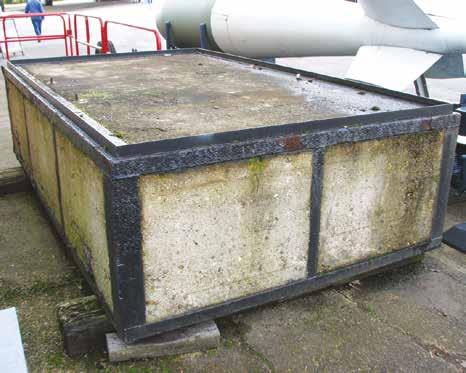
The photograph indicates that the landing gear being tested is from a Valiant B2 with a revised undercarriage design with four wheels rather than the two on the original B1. This larger undercarriage was needed as a result of a shift in the centre of gravity caused by other modifications to the aircraft.

Parking arrangements
Please note that for
in The Heights’, designated vehicles only can enter via the Campbell Gate, off Brookland’s Road. All other Members including Club level and visitors please park in The Heights or main public car park unless otherwise specified.
Parking arrnagements for other weekend events are:
Club level Members: entry via Campbell Gate and parking outside the Paddock. Period and classic vehicles only inside the Paddock by invitation. Please abide by staff directions.
All other Members and visitors: entry via main public entrance off Brooklands Drive.
This issue of the Brooklands Bulletin (incorporating The Spirit) is published on behalf of Brooklands Members, supporters of Brooklands Museum Trust Ltd, by Hine Marketing, Hill Farm Studios, Wainlodes Lane, Bishops Norton, Gloucestershire GL2 9LN. The statements and opinions expressed in the Bulletin are not necessarily those of the Brooklands Members’ Committee or Brooklands Museum Trust Ltd.
While every effort has been made by the Publishers to include correct information, they are unable to accept responsibility for errors or omissions. The Publishers, Brooklands Members and Brooklands Museum Trust Limited cannot accept responsibility in the event of misinformation or lack of source relating to images supplied by a third party by electronic or other means.
Charity number 296661. Please quote this if making donations or requesting them via a funeral director.
BROOKLANDS BULLETIN | JULY - AUGUST 2020 50 AROUND THE
all events marked ‘Parking
B
B
R olls -R oyce and B entley
H e R itage d eale R s
“ Attention to Detail”
H. J. M ulline R F ast B ack
D-series with manual gearbox.
Concours condition, maintained by P & A Wood for many years.

Rebuilt to Le Mans team car specification. Excellent, well maintained condition.
B entley 3½ l it R e 1934



B a R ke R d R op H ead c oupé
Well maintained, good reliable touring car.
Great Easton, Dunmow, Essex CM6 2HD, England
Telephone: 01371 870848 Fax: 01371 870810
E-mail: enquiries@pa-wood.co.uk www.pa-wood.co.uk
entley R- t ype c ontinental 1955
entley 6½ l it R e s peed s ix 1929

020 7933 2200 Performance-quotes@uk.lockton.com locktonperformance.com Leading specialist insurance advisor for classic and performance cars. We make good decisions on your behalf and develop the right solutions for you. First-class service, expert protection, let’s go. start your adventure THE RIGHT WAY
Lockton
Performance is a division of Lockton Private Clients, both trading styles of Lockton Companies LLP. Lockton Companies LLP is authorised and regulated by the
Financial Conduct Authority.














 Katharine Allen
Katharine Allen





 Neil Bailey
Neil Bailey






















 1935 Bentley 4¼-Litre Top Hat Saloon by Freestone and Webb £100,000.00
1952 Bentley Mk VI Standard Steel £44,000.00
1935 Bentley 4¼-Litre Top Hat Saloon by Freestone and Webb £100,000.00
1952 Bentley Mk VI Standard Steel £44,000.00


































































 The aerial view of Brooklands was obscured with camouflage. New buildings both genuine and fake were built to confuse enemy bomber aircraft. This image shows the Hawker and Vickers factories.
A group of soldiers from 284 AA Battery based at Brooklands during World War Two to defend it. Some soldiers were from a Canadian detachment. The site was protected by a Bofors anti-aircraft gun.
The effectiveness of netting in hiding and softening the outline of Brooklands’ buildings is easy to see in this image, which was taken at position W43.
The aerial view of Brooklands was obscured with camouflage. New buildings both genuine and fake were built to confuse enemy bomber aircraft. This image shows the Hawker and Vickers factories.
A group of soldiers from 284 AA Battery based at Brooklands during World War Two to defend it. Some soldiers were from a Canadian detachment. The site was protected by a Bofors anti-aircraft gun.
The effectiveness of netting in hiding and softening the outline of Brooklands’ buildings is easy to see in this image, which was taken at position W43.



















































 Paul Bailey
Paul Bailey









































